
Issue 39
The extraordinary digital transformation of Three UK With Bain & Company, CDW, Intel, Zoom, Asana, and DXC Award-winning tech at OTT upstart Mola THE FUTURE OF WORK FULL STREAM AHEAD THREE STEPS FORWARD
DIGITAL BULLETIN
 ROMILY BROAD Chief Executive Officer
ROMILY BROAD Chief Executive Officer
The changing nature of work was a warm topic before the COVID-19 pandemic. During that crisis and now after it (we hope), the conversation has heated with urgency. Our populations are aging and our attitudes to work have diverged from historic norms. We have a pressing shortage of digital skills, global crises in every corner, and the maturation before our eyes of advanced AI is rapidly changing the basic purpose of humans in the workplace.
In this issue, we speak to leaders in organisations working at the coalface of change to discuss the shifting nature of work and the steps we need to take to manage it.
Listen to myself, Bain & Company’s Ted Shelton, Workato’s Bharath Yadla and Skan AI founder and CEO Avinash Misra discuss the topic in a special
Digital Bulletin podcast. Also find rich insight on the topic with Intel, DXC, Asana, and Zoom.

Case Studies
Two years ago, Three UK, one of the largest telcos in the country and the leader in 5G, decided it needed to rebuild its entire IT infrastructure to meet its needs for the future. The transformation it undertook was as dramatic and wide-reaching as it was lightning fast. We speak to cover-star CIO Belinda Finch, her colleagues and her partners, to find out how it was done.
Meanwhile, IT industry stalwart CDW has reimagined the art of the possible in empowering its vast sales workforce, and dynamic new-kid-on-the-OTT-streaming block Mola takes its award-winning technology on a mission to conquer the world.

PUBLISHED BY VWDA, Norwich, UK Company No: 11454926
TALK TO US
editorial@digitalbulletin.com
business@digitalbulletin.com
DIGITAL BULLETIN
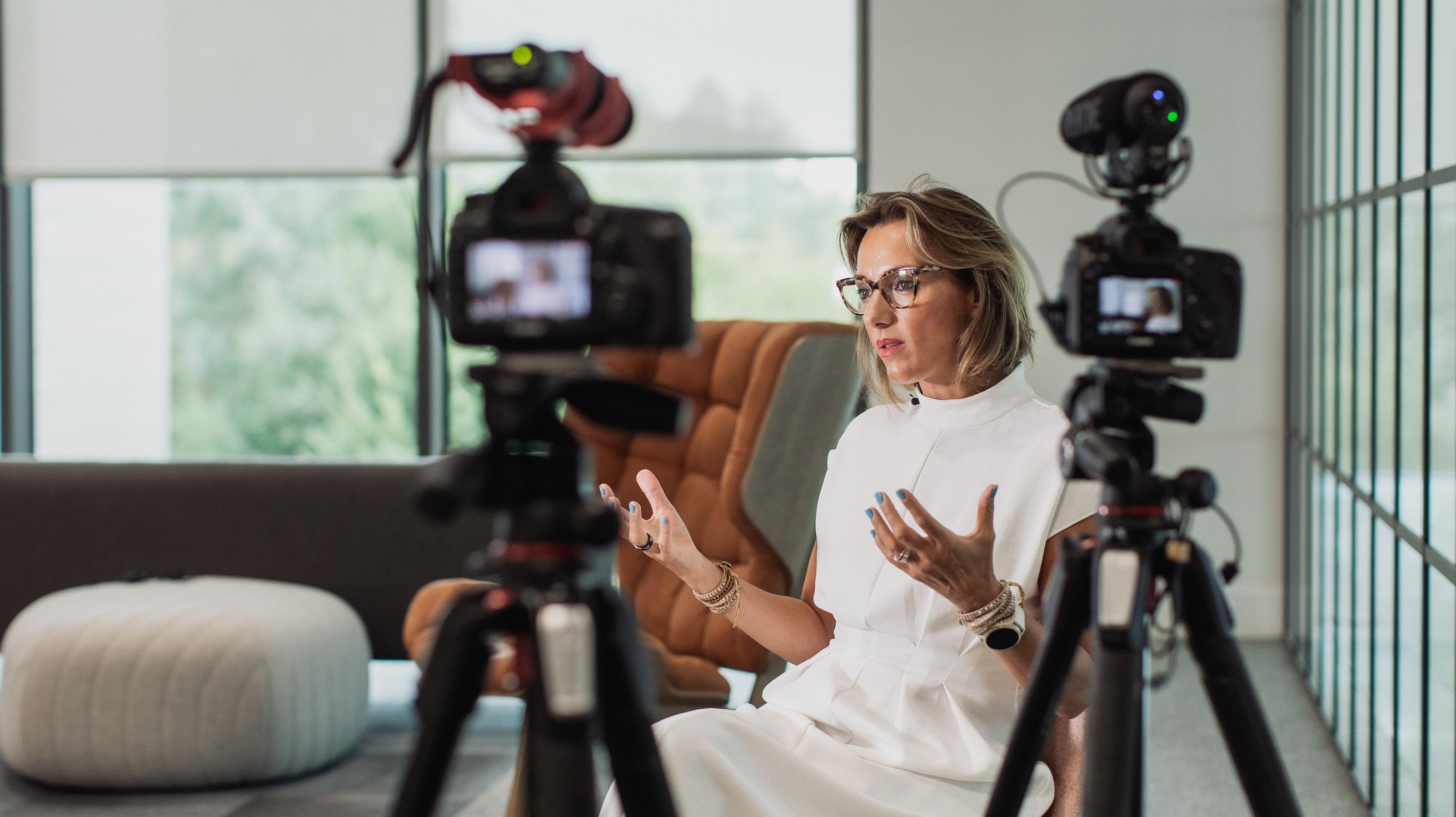

102
Steps Forward One of the biggest telcos in the UK rebuilt its entire IT infrastructure in less than a year. Here’s how 06
Three
OTT sports and entertainment streaming provider Mola has big ambitions, and the award-winning tech to achieve them 36 Predictions Five senior technology leaders on what to expect in the year ahead 50 06 36 Contents
Full Stream Ahead
The future of work
With Bain & Company, Skan AI and Workato
Selling the Future
CDW’s digital transformation of sales



Are we digitally ready?
Intel’s Frans Sheper on education and inclusivity
Hybrid
Zoom’s Magnus Falk on optimising for hybrid work
Moving forward
Asana CIO Saket Srivastava looks ahead
Metaverse
DXC’s Nathalie Vancluysen on VR and inclusivity
the Future
Leading
62
82
96
108
Humans
102
116 62 82 102
T hre e steps into the future
Two years ago one of the UK’s biggest and most pioneering telcos decided to change everything. It redesigned, adapted and completed its transformation in under 12 months, and is now in its final stages to success.
 AUTHOR: Ben East
AUTHOR: Ben East
6 CASE STUDY DIGITAL BULLETIN

ISSUE 39 THREE 7
Three was launched to great fanfare in 2003, when it was the first operator to offer a 3G network to a market still years away from the iPhone. If that seems like a different world from the super-fast, ultra-connected era of 5G, then it probably is - and even successful telecoms companies such as Three are constantly having to adapt to survive. How do you meet the needs of modern customers while ensuring your company remains agile, competitive and forward thinking?
CIO Belinda Finch has helmed an ambitious and wholesale programme of change at Three since arriving little over two years ago. It was, she says, a case of boldly sweeping away the old, introducing an ambitious new approach to technology

and culture, and doing so while maintaining Three’s competitive edge in the market.
“We continued to launch new products and services to our customers whilst transforming at the same time,” she says.
“We launched the Loyalty App, Three+, which went live in February 2022. Apple Watch launched in June and we can now upgrade via indirect partners since July. In addition to this, we also completed two-factor authentication across all channels and secured our whole portfolio of webpages.”
That work coincided with a digital-transformation project that would completely overhaul Three UK’s legacy IT systems, rebuilding it around a simpler, more modern architecture with Amdocs at its core.
DIGITAL BULLETIN
8 CASE STUDY
“We are doing this to move away from a customer being just a single, almost anonymous, number to one where we have a deep relationship with them, where we know their entire account history and where we enable them to engage with us how they want and when they want.
“We are simplifying the customer experience and – importantly - enabling a system where we can launch new products such as device financing, eSIM and other new

products and propositions simply and easily across all channels.”
Finch maintains a the rapid transformation programme she began has been crucial to the future success of the company. Huge investment into 5G has seen Three become the UK leader in network spectrum and download speeds, and yet this enviable position was achieved despite the shape of its underlying business-critical systems. Its core IT architecture had remained largely
ISSUE 39 THREE 9
unchanged in the 20 years since that first 3G network.
Indeed, from billing, mediation and fraud, to credit and collection, Three has been grappling with more than 100 different systems, all with their own idiosyncrasies

and workarounds. “It made the simple act of serving a customer incredibly difficult,” says Finch.
And its information on subscribers was spread across three IT estates, too. The sheer time it was taking to pull together
It was obvious that we needed to pull everything together and make IT both closer to the business and closer to the customers”
CASE STUDY DIGITAL BULLETIN
Belinda Finch
10
Jennifer Romano, Managing Director, Accenture
“We’ve helped Three across their B2B and B2C data transformation, and digital. We’ve brought in expertise from the industry - our subject matter experts on a number of different pieces - so that we can help drive their programmes towards their goals and focus on their broader outcomes”
Belinda Finch, CIO, Three
“What we found really quickly is the quality of Accenture’s resources were incredible. They have been instrumental in helping us run this programme. I would have Accenture as my resource to come in when we need help - I will continue using them as burst capacity where we need highly skilled individuals”

THREE ISSUE 39 11
Seismic or small, change is all around us

With technology and human ingenuity, we can make change work for you and your business. See

how we can help at accenture.com/aerospace Copyright © 2023 Accenture. All rights reserved. Let there be change
data that could enable Three to make business decisions meant that it was taking too long for its products to cut through, for all it had a compelling 5G offer. As Finch puts it: “From an IT perspective, we felt we were lagging behind. We could launch products and services, but they took six months, cost a lot of money, and required very particular skill sets.”
In a telecommunications industry where innovation and new products are key, this was clearly a major issue.
“We were developing projects and by the time the solution was delivered, the business had moved on,” says Simon Gratton, Three’s Chief Data Officer.

“In data terms, we needed to be able to have all the information we have at
our disposal in a single location, so that we were always ready for that next business question when it comes in, that next business outcome to be delivered. And then test concepts quickly, change them, scale them and use technology as a component part rather than an afterthought.”
Such a transformation required a cultural as well as a technological change, adapting a long-running existing transformation programme and planning a company-wide solution which was business led, rather than IT led. Technology would be important - crucial in fact - but it would be used to improve the customer and workplace environments.
“What I learned in my previous roles
DIGITAL BULLETIN
CASE STUDY 14
Vicky Nisbet, Senior Area VP, Salesforce
“We’re working very closely with Three to give them an endto-end solution across their B2B stack. They’ve developed a cloud-first IT stack in under five months with us that gives them the ability to automate their lead-to-order process. So things like raising quotes, signing digital contracts, automating the end-to-end… it increases efficiency, stops errors, and gives their customers a much better experience”
Belinda Finch, CIO, Three
“Salesforce is key to our B2B business and we’ve got it front end. Everything goes through Salesforce, and then goes into Amdocs. Salesforce are incredibly good at helping us fix the things that we want fixing and understanding where we want to go in the future. There’s also a lot more out there that we want to work with Salesforce on”

THREE ISSUE 39 15
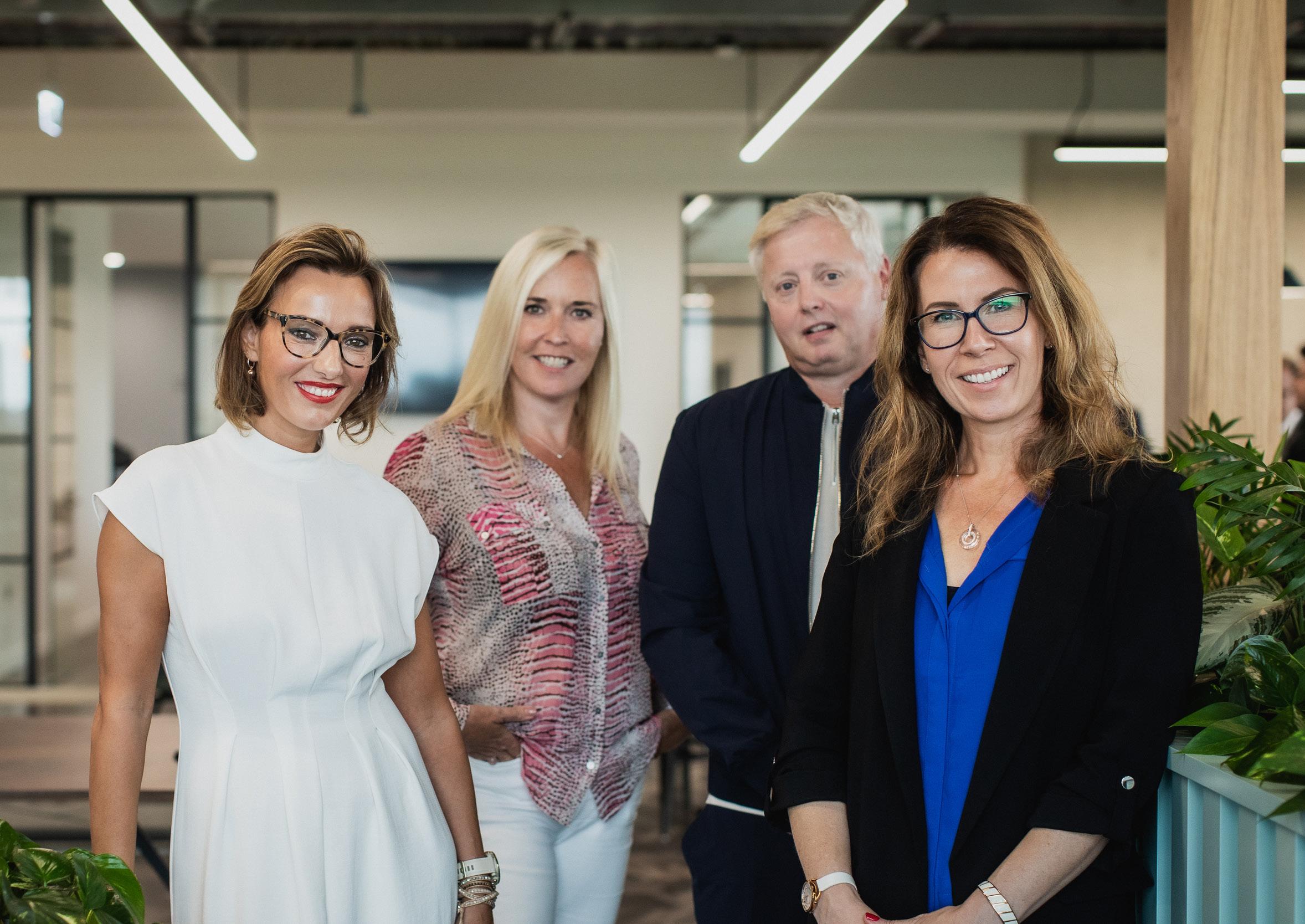


“
We are very proud to be part of Three UK’s business transformation”
Vicky Nisbet, Sr. AVP – CMT, Salesforce
as a CIO is that you need to understand just as much about the business and the commercial side,” continues Finch. “You can’t sit in your lovely little ivory tower with all this great tech. At Three, digital was in one place, data was in another, core IT was somewhere else, and the existing transformation programme was in another building and didn’t have any interaction with anybody else.”
“It was obvious that we needed to pull everything together and make IT both closer to the business and closer to the customers.”
And that’s exactly what Finch’s team did. Within the space of less than one year, the company’s entire Business Support
System (BSS) was replaced. Its B2B systems are fully overhauled, and transformation on the B2C side is nearing completion. Colleagues across Three’s entire retail estate are already working with a suite of completely modernised tools.
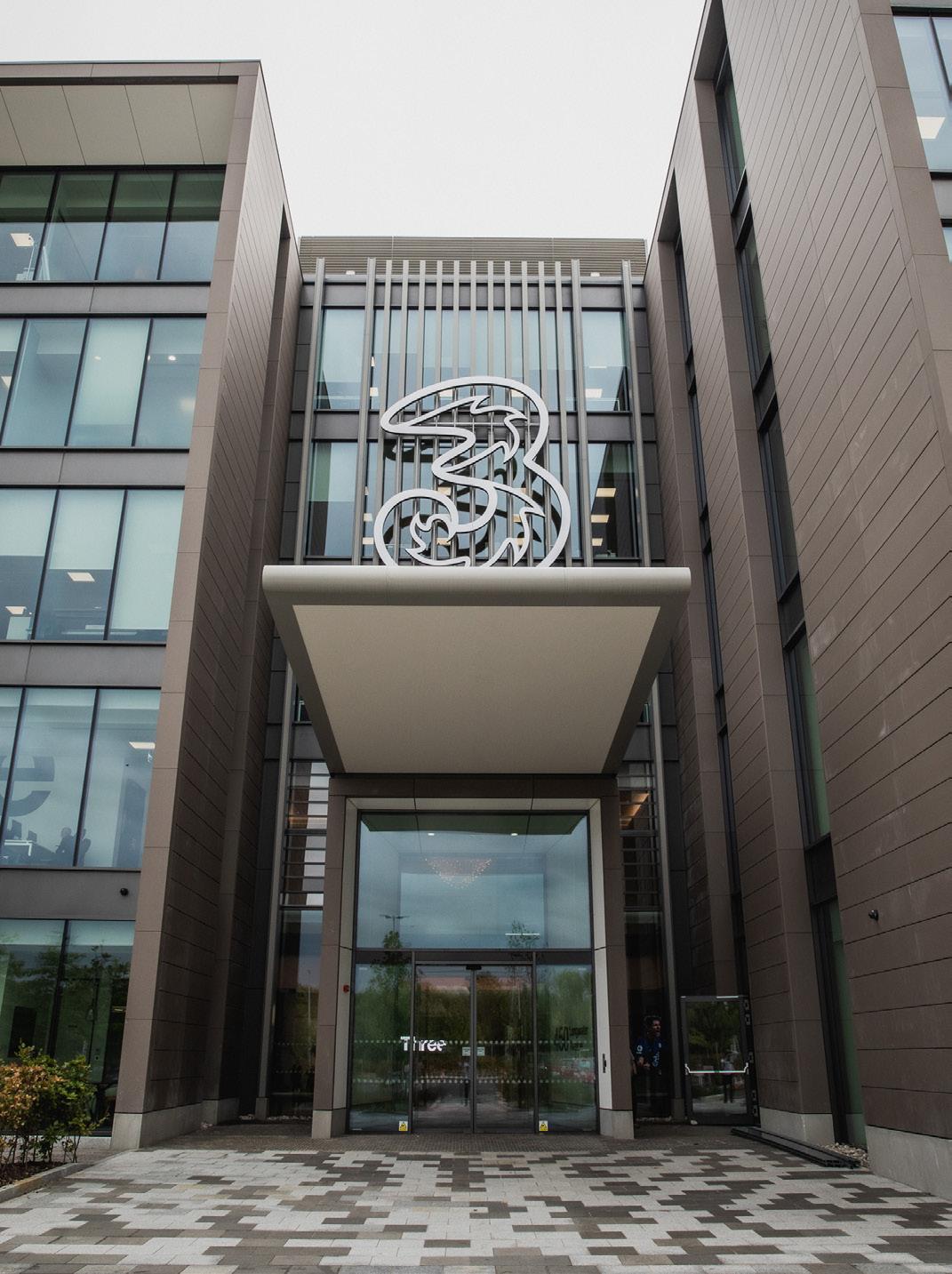

One Badge
Vital to the success of Three’s transformation mission has been the intimate integration of critical partners. That began with the decision source one integrated system
CASE STUDY DIGITAL BULLETIN
18
across both B2B and B2C areas of Three, and in doing so choosing to abandon years of effort attempting to patchwork multiple systems together. That’s where Amdocs came in, which had already proven itself in a similar programme at Three in the Republic of Ireland. It provided a single unified BSS in one architecture.
“We’re a telecommunications company, we’re not a systems integrator,” says Finch. “So making the system business led was
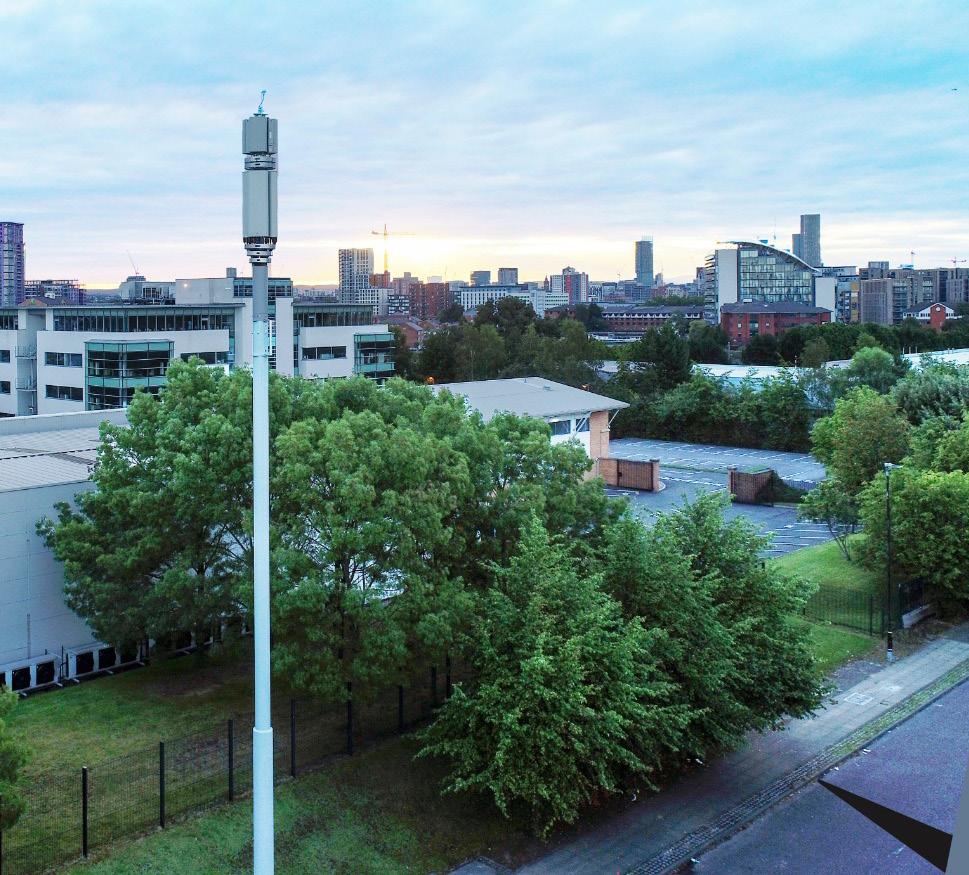
key and Amdocs have got that customer experience at the heart of their thought process. So they got it, they understood what we were trying to do.”
Crucially, though, it was a collaborative process of tailoring the system to Three UK’s specific needs, rather than imposing pre-formed solutions. Amdocs’ Regional Vice President, Roberto Bussolotti, remembers how keen Three was to listen, understand and co-operate, the result being that
ISSUE 39
THREE 19
David Counsell, VP TMT, NTT Data
“We had been involved in cloud design, development, implementation, as well as the broader infrastructure ecosystem for a number of years. Three have experienced quite a dramatic growth in expenditure with regard to cloud services. We saw an opportunity and Three wanted to drive down that cost in terms of what they were planning and to maximise the benefit they were getting”
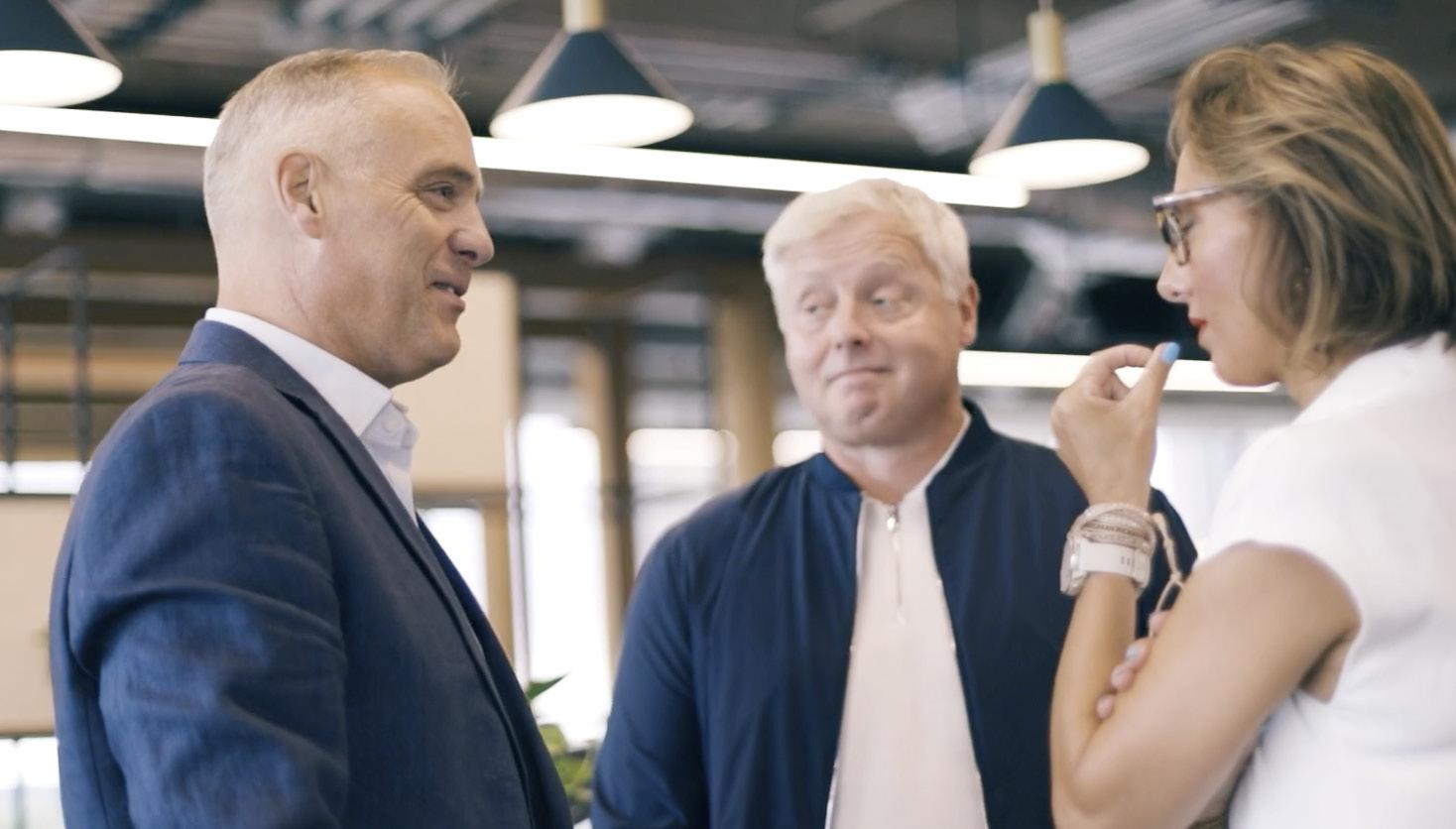
Belinda Finch, CIO, Three
“Some companies would finish a piece of work and sit and wait for you to ask them to do something else. NTT aren’t like that. We do a lot of sharing in terms of what our strategy is going forward and what we’re doing now. They also give us industry information - what’s happening out there, what are the new trends - which is really useful for us so we know we’re on the right track.”
DIGITAL BULLETIN
20 CASE STUDY
Three also has a unique arrangement with Amdocs from a data perspective.
Simon Gratton explains: “They are delivering a data warehouse that provides an entire holistic view to our business functions. It’ll be part of a rapid-release DevOps cycle that we’re looking to

build with them. This is the first time that they’ve deployed this capability into an in-house environment.”
Bussolotti talks with some excitement about how Amdocs can work together with Three to provide a view on what the future might be in telco systems - and how both
ISSUE 39
The ‘one badge’ ethic is a big part of the transformation philosophy”
THREE 21
Simon Gratton

NTT DATA is a leading consulting and IT services provider. Whether it’s breaches, improving operational efficiency or driving new revenue streams digital landscape and deliver outstanding results. NTT DATA offers a portfolio enterprise solutions tailored to suit the entire life cycle of IT investment. team of local experts can deliver on a wide range of services across industries. Global leaders in consulting and IT services www.uk.nttdata.com Guiding Greatness
it’s business transformation, safeguarding against security streams we help organisations navigate the ever-changing portfolio of best-in-class consulting services and innovative investment. Supported by our international Centres of Excellence, our industries.

companies can improve.
He says: “Transparency has been key to the implementation of this huge programme, and that openness will continue. The one-badge philosophy helps us imagine the future. Belinda is always looking at the day after tomorrow, and we are very happy to do this with her and ask how we can go above and beyond.”
While Amdocs forms the centrepiece of Three’s root-and-branch transformation, it is not alone. Multiple strategic partners have been involved and all have done so within a “one badge” team culture fostered by Finch. The approach has led to a deep sense of partnership between Three, its suppliers, and between each other – a vital contributor to achieving so much change in such a short time.

CASE STUDY DIGITAL BULLETIN
24
When Finch decided to lean on Accenture’s considerable resources to help drive the transformation programme, she found a partner willing and able to jump straight in and lead as part of the team. “They’d come to us and say, ‘guys, if you don’t think about how you’re going to change this process, the whole thing is going to fall over in 18 months,” she says.
“They’ve been our eyes and ears, in the detail on the transformation programme and
looking into the future. So they are very much part of my team - in fact, sometimes I forget that they are a supplier. They’ve all got three. co.uk email addresses. And we do that on purpose because we are one team. They’ve got our backs, and they really understand what we need, when we need it.”
NTT Data is another long-standing partner whose involvement has been critical. With a significant focus on cloud optimisation to help Three manage the

ISSUE 39
THREE 25
Fawad Qureshi, Global Industry Field CTO
“The Snowflake platform has enabled Three to store all their datainternal, OSS, BSS or external - from the suppliers, partners, or third parties, all in a single platform. It’s allowed them to perform analytics at a scale, which was previously unheard of. Now they have agility, performance, scalability, all of that in a single environment”
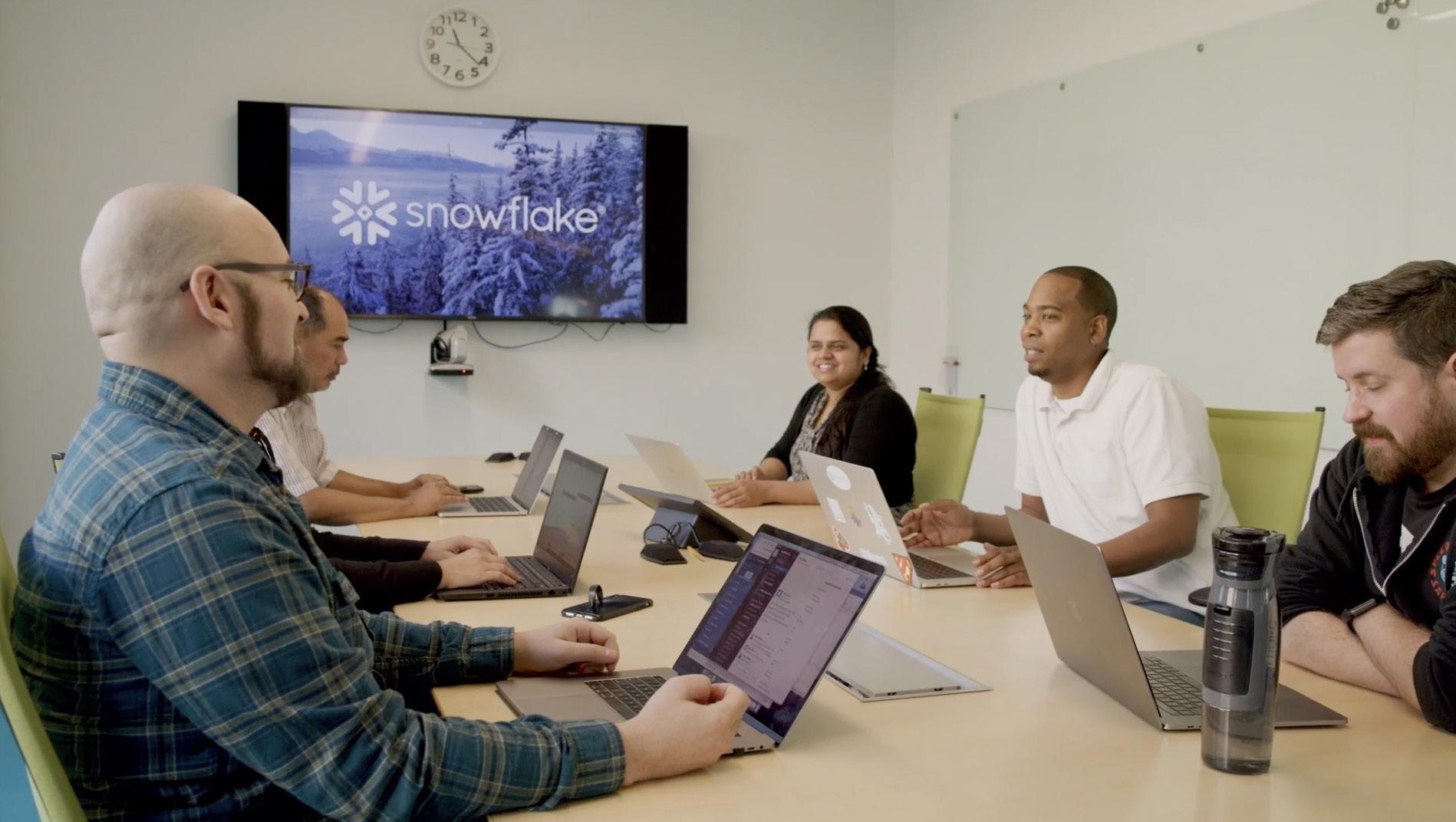
Simon Gratton, CDO, Three
“Snowflake is effectively the first point of call when we need to find out what’s going on operationally. Where we want to forecast or predict things that may happen, or where we want to pull network information together with business information and understand the impact on churn, on the right propositions. It gives us a huge degree of change pace, and that obviously could manifest in new products to the market”
DIGITAL BULLETIN
CASE STUDY 26
ongoing cost of its transformation, NTT
Data offered to work on a gain-share model to link its own interests directly to Three’s objectives; NTT Data would only make a return if it accomplished the savings it promised. As well as ensuring there was a highly motivated and proactive partner in the room, it fostered a rich culture of innovation and collaboration.

“It’s an investment in their ability to make a difference,” says Gratton. “But it’s also an investment in their belief that they can help us and educate us to do things the right way. They work from inside as part of the team - that’s been evident throughout. Their engineers are treated like members of the team. In fact, it’s indistinguishable when we’re developing things, or having meetings, who is working for NTT Data and who is working for Three. The ‘one badge’ ethic is a big part of the transformation philosophy.”
Another vital partner to Gratton is Snowflake, with whose vastly scalable data cloud tools Three aims to democratise intelligence across its entire business. Ingesting information from the Amdocs platform and other primary sources such as Salesforce, Snowflake will form a powerful ‘decision engine’ at the heart of Three’s operations, says Gratton, and through Snowflake’s Telco Data Cloud be able to develop new opportunities for revenue generation.
“Snowflake are very collaborative by nature. We’ve had architects and key
THREE ISSUE 39 27
MOBILISING THE WORLD’S DATA

Snowflake isn’t just a great technology company. We’re all about the data—easily enabling governed access to near-infinite amounts of data, and cutting-edge tools, applications, and services. With the Data Cloud, you can collaborate locally and globally to reveal new insights, create previously unforeseen business opportunities, and identify and know your customers in the moment with seamless and relevant experiences.
Learn more


individuals from the Snowflake team present throughout. It’s very much an Academy like concept, driving the team’s competency with the technology; very collaborative, very quick as part of the transformation rather than sitting at the periphery,” says Gratton.
Salesforce, meanwhile, is central to Three’s B2C identity management and B2B operations. It’s a long-standing partner of Three and Finch says it will play an ever more important role as the company accelerates. Salesforce’s
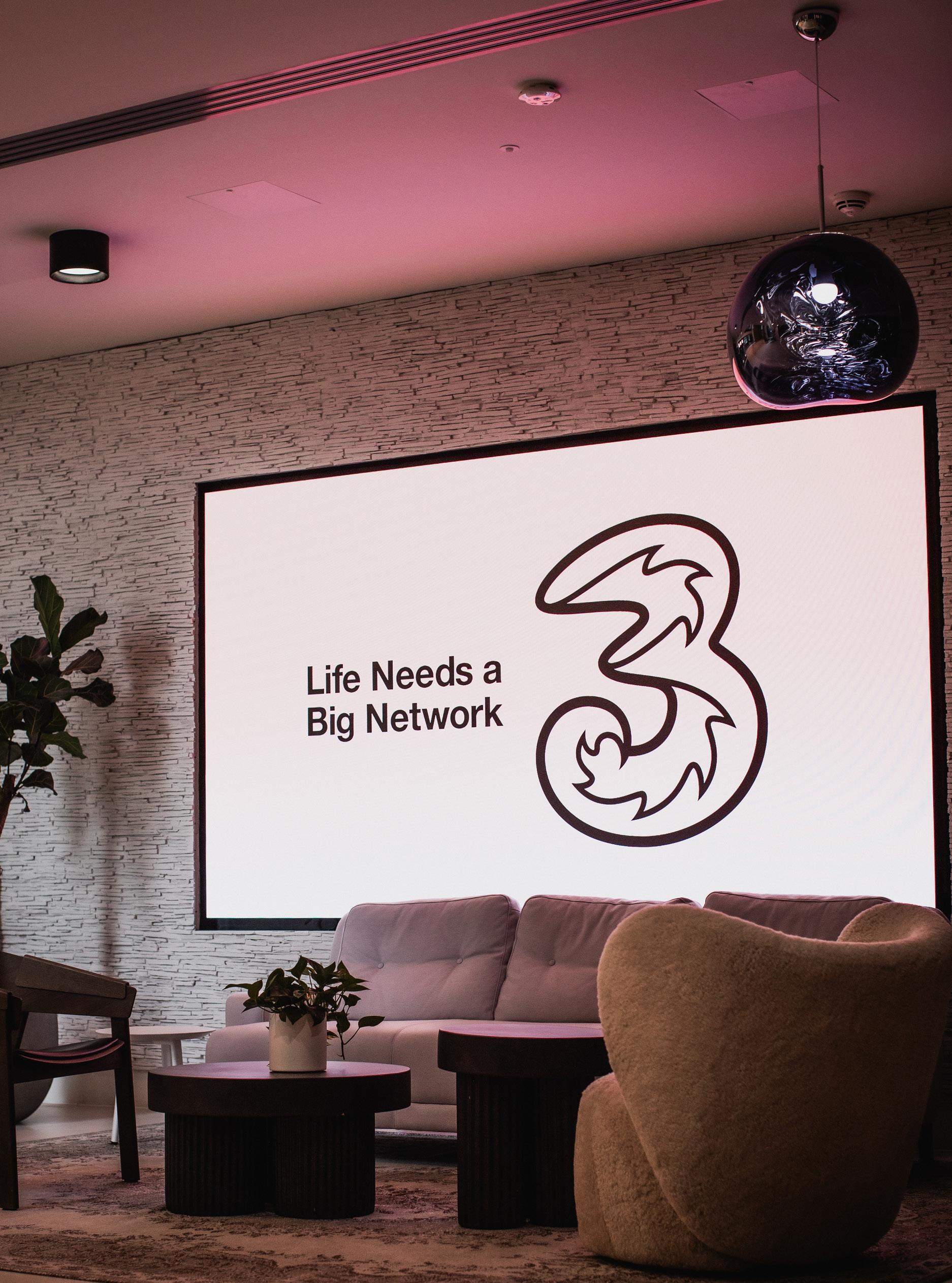
DIGITAL BULLETIN
CASE STUDY 30
Roberto Bussolotti, Regional VP, Amdocs
“We provide everything from the customer interaction channels down to the activation and the implementation of the offers, and the rating and the billing in the network. On top of that, there is also business intelligence which provides Three with data to interpret and establish the best strategy to get to the market”

Belinda Finch, CIO, Three
“Everything is contained in one architecture, in one integrated system that works together. Amdocs are very, very good at working with a business lens, rather than an IT lens. They’ve got that customer experience at the heart of their thought process. They get it, they understand what we’re trying to do. I can honestly say they are a true partner”
THREE ISSUE 39 31
DevOps business driven methodology
Our DevOps expertise and proven experience, combined with over 35 years of experience working with communications service providers, enables us to deliver business value faster.
Telecommunications CXOs face strong competition as expectations from customers continue to rise. Moving faster than ever before in order to provide business value at each step is the key to staying ahead of the competition.

And choosing the right partner – who can tailor the DevOps approach to telcos’ specific challenges and lead their projects successfully – is vital.
Our DevOps expertise and proven experience, combined with over 35 years of experience working with communications service providers, enables us to deliver business value faster.
www.amdocs.com


commitment in numbers to Three’s mission – and it’s ‘one-badge’ culture –has been significant, she says.
“Salesforce is absolutely key to the way that we interact with our customers. So we use Salesforce Cloud services and Salesforce Communications Cloud. They’ve been absolutely brilliant. There’s a lot of Salesforce stuff that we’ll start plugging in – they’re chomping at the bit - and are definitely a long-term partner for Three.”
A daring plan, aggressive timescales, and a resolute devotion to joined-up partnership has made Three’s remarkable IT change programme one of the most successful business transformations any of the parties involved have worked on.
NTT Data Vice President David Counsell calls the depth, breadth and scope of the transformation across all facets of Three’s organisation “audacious”, and the delivery of its benefits across the

CASE STUDY DIGITAL BULLETIN
34
business have already positioned it as a real leader in the market.
Finch is clear there is still much to do, but Three is now perfectly positioned to be that agile, responsive and business-focused telecommunications company it always set out to be. The contrast with its previous endeavours is stark.



“I am so excited about how this is going to end up because having a transformation programme that impacts both the
customer and the people who actually work at Three is where you really make a difference,” says Finch.
“People’s lives will be easier. The customer experience will be absolutely second to none, our agent who picks up the phone - things will be so much easier for them. Retail stores are already seeing the absolutely amazing difference. But I think organisationally, we’ve got a huge opportunity here to be one of the prime movers in the way we combine IT with business.”
ISSUE 39
THREE 35
FULL STREAM AHEAD
Upstart Indonesian OTT streaming service Mola is taking its sports and entertainment offer global, and is doing it on the back of award-winning technology transformation.
 AUTHOR: Sam Jermy
AUTHOR: Sam Jermy
36 CASE STUDY DIGITAL BULLETIN

ISSUE 39 MOLA 37
Mola is lively, young, and rapidly expanding both in size and in reach. It is quite fitting, then, that the upstart Indonesian TV streaming company is named after an impressive ocean-roaming fish.
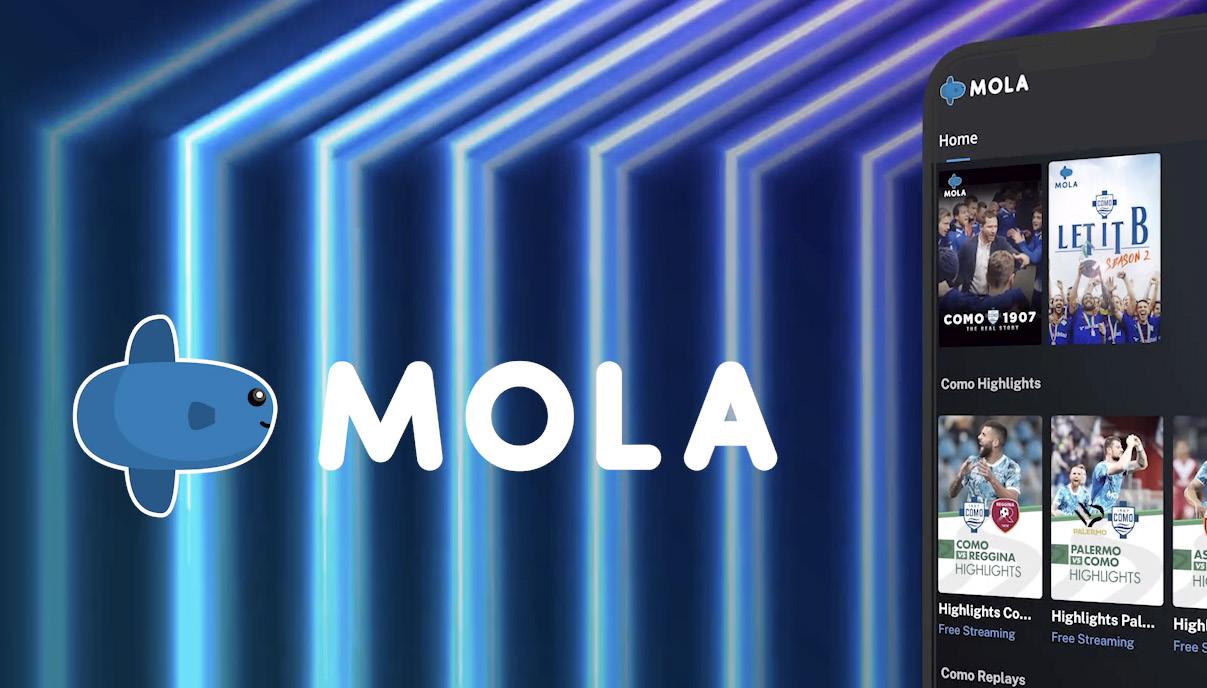
The mola – perhaps more commonly known as the sunfish – is one of the largest and most distinctive fish in the world. A tropical creature, it nonetheless travels all the world’s oceans – as far afield as the shores of the UK – and is capable of swimming at impressive depths and moving at surprising speed.
Mola, the multi-award-winning videoon-demand and over-the-top (OTT) video streaming company headquartered in Jakarta, shares many of the traits that make its name and logo so appropriate.
The company was founded as recently 2019 but has already amassed a huge following of subscribers on the back of licenses to stream hot-ticket content such as the English Premier League. Its service now features a boat-load of content rights, and the company is plotting a course to rapid international expansion.
“We are now slowly being recognised. I always explain to people: Mola is a fish in Indonesia - a very big fish. But a lot of people outside Indonesia don’t really know about it,” says CP Lee, Mola’s Chief Technology and Operations Officer.
“The fish is now swimming out into the ocean, and people are realising it’s out there. This is also exactly what we want to do as a company - to create awareness via all different mechanisms, not just from

DIGITAL BULLETIN
38 CASE STUDY
the branding, but also by winning all these accolades. It gives a stamp of approval, a stamp of accreditation to all the crew at Mola itself.”
Aquatic analogies aside, Mola is making strides on land.
Alongside its crown-jewel Premier League rights, the company serves extensive sports content to the Indonesian and regional Asian market. It has won rights to show WWE and NFL, plus German Bundesliga and Italian Serie B football on its platform, all of which it hosts alongside original programming and live-streamed music and events.
The awards Lee mentions have been won by Mola in recognition of its technical
capabilities as an OTT provider. It was named as a Top 10 OTT (Entertainment) App by Data.ai for the quality service the platform provided in 2021, culminating in broadcasting the pandemic-delayed Euro 2020 football championship finals. Lee himself has been named Video Technologist of the Year at the Videotech Innovation Awards by Informa, and a Top 10 CTO by Entreprenuer.com in 2022.
Teamwork
Lee’s priority as head of Mola’s all-important technology team is viewer experience, something he and the company consider a sacrosanct differentiator. Mola partnered with French video distribution technology

ISSUE 39 MOLA 39
company Broadpeak as part of its strategy to make sure its end users only received the best quality.

Broadpeak provided Mola with the essentials of a revamped and powered-up content delivery network (CDN), including its leading BkM100 CDN mediator and BkS400 HTTP video cache servers. The upgraded CDN marks a considerable leap ahead for Mola’s mission-critical digital infrastructure, ensuring seamless delivery of content up to full 4K, on any end device.
Lee says: “We can utilise the CDN from Broadpeak to route traffic based on the metrics we have selected, depending on the actual needs. Our relationship has evolved with them - now we are working together in terms of technology advancements. I think the thing about technology relationships is that you never stop looking at what you’re doing today and how things will be in the future. Not just six months down the road, but beyond. It starts to drive you.
Having great content is one thing, but getting the experience to the end user is another challenge altogether”
CASE STUDY DIGITAL BULLETIN
CP Lee
40
Lee speaks to the nature of Mola’s relationship with Broadpeak as extending well beyond the simply transactional; it’s about an exchange of ideas in pursuit of mutual continuous improvement.

“The classic vendor client relationship where you just buy and use isn’t for us,” he says. “I have always advocated partnerships between any two parties. It means that we influence each other to make the best of both organisations. We will tell them what we want, what we
need, and what is the potential that I see on the market.”
Lee suggests some of what he feeds back to partners like Broadpeak may seem “ridiculous to them now”, but can nonetheless influence partners’ product roadmaps to the extent Mola can ultimately benefit as a customer of products and services that are being actively innovated. He says partnerships in which both parties are willing to listen and act in response to each other’s needs are the ones that persist and succeed.
MOLA ISSUE 39 41

Broadpeak designs and manufactures video delivery components for Content Providers and Network Service
Providers deploying IPTV, Cable, Satellite, OTT and mobile services.

the
We empower video service providers so they can stream
content people love with a compelling experience.
www.broadpeak.tv
“Having a partner who does that for us, it means that you have this core relationshipand it’s always a win-win situation,” he adds.
Growth strategy
Mola has in-house development capabilities but over time the company decided it needed to be more scalable and flexible. As well as Broadpeak, more generic CDN players such as CloudFlare acted as partners because, as Lee believes, a key aspect of a resilient strategy is to make sure the correct platform providers and services are in the right place to help Mola strengthen its core. The same applies to its people. At the same time as bringing in front-end developers locally, the firm has been busy scaling up and establishing
operations in its newly created international markets. Viewers in the UK, Singapore, Malaysia and Italy can now enjoy watching Mola content on a free-trial basis and will be able to consume many products on offer in the home Indonesian market.
Stemming from the core content of live football, Mola has been evolving over time and has branched into other sports like UFC and MMA. It is also further moving into the general entertainment sphere. It is collaborating with Paramount, one of the largest studios to offer direct-to-consumer streaming apps, and has recently acquired the rights to show live PGA Golf in Singapore. Mola is also the main sponsor of Italian football club Como 1907, which play in Serie B - the country’s second division.

DIGITAL BULLETIN
CASE STUDY 44
Now four years since its inception, the company is permeating into new territories and becoming a truly global organisation.
Content experience is king Lee is clear on the role his technology team has to play at the heart of a company serving customers with entertainment. Where content is curated in specifically targeted ways, it’s up to Lee’s team to make sure that it’s served perfectly.

“Our streaming service is selective to ensure that we target and provide the best experience to our end users from a content perspective. For the technology team, it is really about encompassing that. Having great content is one thing, but getting the experience to the end user is another challenge altogether,” he says.
The transformation of Mola’s CDN underpins the effort, but the story doesn’t end there. Lee says the team is constantly considering what new technologies it can bring to bear to support, improve and innovate the experience it provides to users.
“In all my communications to the team, I always stress that our role is to make sure users benefit from everything we do. When we do that, nothing goes wrong, even when things don’t achieve as much as we hope. We just make life better.
“I think all organisations should have at least some kind of thought as to how to make your users’ live better, through small things that you’re doing or engaging them with.”
…you never stop looking at what you’re doing today and how things will be in the future”
MOLA ISSUE 39 45
CP Lee
For Lee, a pleasing user experience (UX) is something that makes viewing content on Mola’s platform feel special. That specialness is what Mola knows will help drive customer acquisition and retention over time.
“That is the holy grail we are trying to reach. Even things like how the user decides what to view next, or how they navigate the screens and menus – it’s all part of the UX and is something the team is always trying to find a better way to do. I think it’s a continuous cycle of improvement.
A big investment in its CDN means Lee can focus on a particular gremlin in the OTT machine: latency. With a service whose central USP is live sports and
entertainment, any delay or disruption to its streams can be the difference between having customers or not.
“A lot of focus becomes on delivery. The focus currently for the technology team is really to tackle that latency and delivery to the end user. Thanks to our trusted partners, we do not spend time trying to catch up with technology. We spend time learning what technology can do for us in this regard, and then deploy it.”
The gradual emergence of 5G infrastructure across the territories Mola now serves is an area on which Lee’s team is also concentrating. The advantage 5G connectivity offers to those users tapping into services like Mola is obvious, as long as the company can serve them properly. This is particularly relevant in markets like Singapore, where 5G rollout is quite extensive. But elsewhere – in particular new countries into which Mola intends to expand – that is not necessarily the case. Under Lee’s guidance, Mola has constructed a delivery solution flexible enough to cater to the specific needs of users in different territories accessing its content across a vast range of bandwidths and devices.
The company’s tech team is also innovating services around the content itself, leveraging data to enhance information and interactivity around sport matches, for example, or by facilitating two-way communication between hosts and viewers in Mola entertainment shows.

CASE STUDY DIGITAL BULLETIN
46
When the company broadcasted the Euro 2020 tournament last year, Lee says users were able to access the highquality delivery they expected, but his team decided to go one step further. By providing a new Android mobile app, more viewers than ever were able to access 4K resolution sports content. The added ability to watch on Android-linked TVs while enjoying the benefits of Dolby Vision and Dolby Atmos meant Mola was able to exceed its users’ expectations. Something it is driven to achieve as a core principle.
“For Mola, the strategy going forward is to try to maximise what the user has, so they can have the best experience. If you have the capability in terms of bandwidth or device, we will get these new tech features to you. I think that is what we call being user centric,” says Lee.

Future vision
When Lee took charge of the technology team in 2021, he looked at where Mola could strengthen the team and decided the future would not see the company restrict itself to
ISSUE 39
MOLA 47
finding talent only at home. Today, he has operations teams in Singapore, Taiwan, and the main hub of Jakarta. Newer teams also exist in the UK and Italy, and all pull in the same direction as the global business model takes shape. A consequence of COVID-19 is that Mola now understands the power of working remotely, and the team structure can start evolving towards a truly flexible culture.
Lee says: “I think that will become the norm, where geography is no longer key to how you
can find the best people you need for doing the job. I think that is the way forward, and that’s how I’m building the technology team.
“Besides building our own team, the future strategy is to continue to work with a lot of partners. It’s a very hybrid setup, as compared to some other organisations that are either fully in-house or fully outsourced. We have the best of both worlds.”
Being a consumer-facing technology company is not without its challenges,

DIGITAL BULLETIN 48 CASE STUDY
and Lee acknowledges it remains a choppy market for an industry confronted particularly hard by a global squeeze on people’s discretionary spending. However, his team’s work over the last 12 months to supercharge Mola’s delivery of top-class user experiences sets it on a healthy path to the future.

Mola is an innovator and a pace setter. Perhaps the most bold example of that being its move as an online content
provider to establish real-world events, be that build ups to UFC bouts or live music events. Not just as a source of new content, but to create connections for the brand both online and off.
Lee believes the velocity at which Mola is moving and its innovation agility sets it well for the future, and he’s built the team to deliver it. More awards are surely on the horizon as the big fish of the tropics finds its way to yet more shores.
ISSUE 39
Our role is to make sure users benefit from everything we do”
MOLA 49
CP Lee
As a new year is upon us, Digital Bulletin talks to five senior technology leaders about their 2023 technology predictions.

20 23 2023 TECH PREDICTIONS DIGITAL
BULLETIN
TECHNOLOGY PREDICTIONS 50

ISSUE 39 2023 TECH PREDICTIONS 51
Cybersecurity: threats proliferate but best practice still works
















































As 2022 recently ended, CISOs and other security personnel are likely to be feeling exhausted. The year was unrelenting on the cybersecurity front and adversaries are only becoming more sophisticated and adopting more advanced techniques and technologies to circumvent organisations’ security measures.



Ransomware remained the most dangerous, costly and prevalent cyber threat to EMEA organisations in 2022 and will continue to be the most damaging cybercrime tool of 2023. According to CrowdStrike’s 2022 Global Threat Report, there was a terrifying annual increase of 82% in ransomware related data leaks costing the companies concerned €1.72 million on average.































It’s easy to understand the enduring appeal of ransomware to cybercriminals: it is increasingly easy to use and wildly lucrative. Over the course of the last two years, obtaining and using ransomware tools has become simpler than ever, with an ecosystem of criminal suppliers offering Ransomware-as-a-Service, with other elements of the operation, from stolen credentials to payment services and money laundering, also available as third-party services from a growing range of providers. Getting started as a cybercriminal required no more than a working credit card in late 2022.
 Zeki Turedi, CTO EMEA, CrowdStrike
Zeki Turedi, CTO EMEA, CrowdStrike
52 2023 TECH PREDICTIONS DIGITAL BULLETIN
This coordination of criminal service providers to provide specialisation and automation is sadly only likely to grow over the coming year. Ransomware will continue to grow until such a point that most organisations have adopted advanced tools that make other criminal tactics more profitable.















The 2023 battlefield



















































































Over the course of 2022, we witnessed some evolution in adversaries’ ransomware tactics. The extraction of sensitive data and extortion attempts based on the threat of the sale or publication
of this stolen information has seen a marked rise. Indeed, we have seen several cases over the course of the last year in which the traditional encryption of victims’ data has not been part of the attack, with the adversary moving directly to threatening exposure of the data, with all the legal, regulatory and reputational damage such leaks would entail. The extortion tactic is potentially worth millions of Euros for every attack and can be repeated without any additional effort on the part of adversaries, so long as the data retains a value for its rightful owners.
Like previous years, we continue to see the successful and most sophisticated adversaries no longer using malwarebased attacks but focussing on non-malware based techniques. As companies continue to focus on malware, these interactive attacks have begun to provide a higher success rate for cyber attackers. They now account for 71% of successful breaches, up 50% on the previous year. Ever the pragmatists, cybercriminals are now focused on identity-based attacks, whereby, rather than hacking their way into a victim’s system, they can just simply log-in, using genuine but stolen credentials available on the underground markets of the dark web or through other techniques.


This continued move to malware-free attacks, growing strongly since 2019,





























































































































































































ISSUE 39 2023 TECH PREDICTIONS 53
puts identity protection at the heart of cybersecurity in 2023. Alongside established, well-understood policies around strong passwords, organisations need to adopt new technologies developed specifically to make it harder for criminals to succeed with identity-based attacks. Security departments need to establish zero-trust policies and the technologies to support them if they have not already. They need to interrogate every identity on the network and use a variety of techniques to validate whether that identity is legitimate. Their chosen technology partner must offer
several ways in which this legitimacy can be established (or not). Data in the organisation needs to be split, according to the needs of different roles in their organisation. A salesperson might legitimately need access to customer records, for example. Someone working in production probably does not.













Alongside identities, APIs became a part of the cybersecurity battlefield in 2022 and is a trend we will see continue this year and beyond. Gartner® predicts this will become the most common attack vector before

















54 2023 TECH PREDICTIONS DIGITAL BULLETIN
long. Many cloud and SaaS services are accessed and controlled through APIs that allow their functionality to be extended and the flow of data through different applications. This is key to the power and popularity of cloud and SaaS, but like any other fast-growing technology, it has attracted the attention of bad actors. We’ve seen several successful attacks in this domain, and security-conscious organisations will have already adopted solutions that can ingest and assimilate signals from many different parts of their IT estate, as well as endpoints.
The right way forward - partners not technology
Technology moves very quickly and that won’t change in 2023. Anyone who has worked in the domain knows this: the tools and processes that were best practice in 2022 may be considered dangerously antique by the end of this year. This has important implications for your choice of vendor. It doesn’t make much sense to focus entirely on a particular product or technology, since these inherently have a short shelf-life. Rather, you should choose a vendor who will become a partner through the uncertain times ahead, which will adapt and continue to support you as technologies and threats evolve. A partner organisation
will have evidence of high, sustained levels of support for its customers. It will be transparent about its current capabilities and its roadmap.
Hopefully, your choice of partner will lead you to a happy and safe 2023.

ISSUE 39 2023 TECH PREDICTIONS 55
Sam Attias, Director of Product Marketing, Celonis

Predicting the future with process mining
Over the next year, we will see the rising adoption of process mining as it evolves to incorporate automation capabilities. Process mining has traditionally been a data science done in isolation, helping companies identify hidden inefficiencies by extracting data and visually representing it, acting as an X-ray for businesses to see where inefficiencies exist within their operations. However, it is now evolving to become more prescriptive than descriptive and will empower businesses to simulate new methods and processes in order to estimate success and error rates, as well as recommend actions before issues actually occur. It will fix inefficiencies in real-time through automation and execution management.
Furthermore, process mining is undergoing a major step-change in the field by incorporating a revolutionary new object-centric process mining technology. Businesses that utilise the technology will now have a multi-dimensional understanding of processes and all related business factors and dependencies. Rather than just identifying single inefficiencies, process mining will act as an intuitive and powerful way for companies to easily analyse complex interconnected processes and see where an initial inefficiency has metastasized to other parts of the business.
56 2023 TECH PREDICTIONS DIGITAL BULLETIN
Data sharing and collaboration
Today’s macroeconomic challenges have put a greater emphasis on the need for companies to share their data as well as give easy access to insights. Across departments, offices and regions, sharing data has traditionally been difficult and inaccessible for businesses, leading to lack of visibility at a time when companies can least afford it. Inflationary pressures and supply chain issues have encouraged business leaders to share and benchmark data within their own company, which is why data sharing and collaboration will be
crucial to businesses over the next year. Companies will increasingly look to harness technologies and platforms that allow data to be shared within their organisation and across their ecosystem in both a seamless and secure way. By developing broader datasets, businesses in 2023 will use process intelligence to reveal which best practices should be adopted internally, drive innovation, and create better business outcomes. As data sharing and benchmarking increases, it will also create healthy competition across internal departments and teams.
ISSUE 39 2023 TECH PREDICTIONS 57
The evolution of social robots

In 2023, social robots will be back. Late in 2022, we saw companies like Sony unveiling robots like Poiq. This set the stage for a new wave of social robots. Powered by natural language generation models like GPT-3, robots can create new dialogue systems. This will improve the robot’s interactivity with humans, allowing robots to answer any question. Social robots will also build narratives and rich personalities, making interaction with users more meaningful. GPT-3 also powers Dall-E, an image generator. Combined, these types of technologies will enable robots not only to tell, but also show dynamic stories.
But this is not only about the novelty effect. Dall-E will keep pushing research to help robots define their behaviour
based on their surroundings. As image detection and context generation merge, robotics scene awareness and social intelligence will take a new leap. By generating a detailed textual description of an image, robots will soon be able to understand the room they are in or what people are doing. This is another step towards real autonomy.
However, we cannot be blind to the misuse of technology. The war in Ukraine has made it clear that robots have a market. The Institute for the Study of War has signalled drones as essential as shells. Their large-scale deployment makes this the biggest “drone war” we have seen. Autonomous vehicles have also found a niche in the conflict, allowing armies to transport equipment. Underwater drones as well. Outside this war, China’s Kestrel Defense has also posted videos of a quadruple robot launching munitions or carrying a machine gun.
Unfortunately, in 2023 we may confirm that the world has started a new arms race. Gone are the days of the EU’s ban on killer robots. This war has likely set the stage for what is to come.
 Gabriel Aguiar Noury, Robotics Product Manager, Canonical
Gabriel Aguiar Noury, Robotics Product Manager, Canonical
58 2023 TECH PREDICTIONS DIGITAL BULLETIN
Christian Kleinerman, SVP of Product, Snowflake

Business

We’re poised at the start of a renaissance in software development where developers will bring their applications to central combined sources of data, rather than the traditional approach of copying data into applications. Every single application category, whether it’s horizontal or specific to an industry vertical, will be reinvented by the emergence of new data-powered applications — leveraging massive amounts of data to personalise their products and optimise their services. This rise of data-powered applications will represent massive opportunities for all
different types of developers, whether they’re working on a brand-new idea for an application and a business based on that app, or they’re looking for how to expand their existing software operations. Platform providers will take on much of the burden of security, governance, privacy, distribution, and monetization, leaving developers and entrepreneurs free to focus on innovation around their primary differentiators.
applications will see the beginning of a rebirth in favour of their new data-powered versions
ISSUE 39 2023 TECH PREDICTIONS 59
The advent of easy-to-use low-code or no-code platforms are already simplifying the building and sharing of interactive applications for tech-savvy and business users. Based on that foundation, the next emerging shift will be a blurring of the lines between two previously distinct roles — the application producer and the consumer of that software.

Application development will become a collaborative workflow where consumers can weigh in on the work producers are doing in real-time, for instance, by commenting on code.
Effectively, application creation will follow a similar path to other digital artefacts such as documents, diagrams and presentations where collaborative and iterative workflows enable two-way peer collaboration through tools such as Google Docs, Google Slides, and Figma. Taking this one step further, we’re heading towards a future where app development platforms have mechanisms to gather app requirements from consumers before the producer has even started creating that software.
Social media ‘influencer-coders’ will exert a greater impact on boosting the popularity of open source technologies. We live in a time when enthusiastic and charismatic influencers can significantly shape opinions and tastes through their recommendations and activities on social media. Open source is fast becoming an ecosystem impacted by social media influencers. For instance, Data Professor, devaslife, George Hotz, and Primeagen already regularly live code on Twitch and YouTube showcasing their favourite open-source projects. I expect this trend to continue and to play a stronger role in helping to make some open-source projects rapidly popular and more widely adopted. It’s not only brand-new technologies that will benefit. Influencers will also appreciate the beauty of older
Adrien Treuille, Head of Streamlit, Snowflake
60 2023 TECH PREDICTIONS DIGITAL BULLETIN
Application development will become a two-way conversation between producers and consumers
open-source code and bring it to the attention of brand-new audiences. An important new success metric for open source will be not only how cool a project is, but also the coolness factor and the social media reach of its hip influencer fans.
AI pair programmers will fundamentally transform software engineering. Machine learning technologies have changed and made the process of software development faster for some time - particularly in decreasing the number of characters needed to express an idea in code. What’s different and exciting about the new AI pair programmers such as GitHub Copilot
or TabNine is that we’re witnessing the invention of a new and fundamentally more expressive language. These new tools, trained on billions of lines of code, can use that learned context to auto-generate the code a developer is writing, thereby transforming their workload. The more code available about a project, the faster it is to write in that project. We’ll see many more developers creating an entire application by writing a single line of natural-language English, and then watching the AI pair programmer complete the rest of the work. This technology offers developers one of the most profound advancements in software engineering in the last half-century.
ISSUE 39 2023 TECH PREDICTIONS 61
LEADING THE FUTURE OF WORK
Not since the industrial revolution has society reckoned with a change as significant as this. The Computational Revolution is here and global consultancy Bain & Company, alongside technology partners Workato and Skan AI, says work is about to become altogether more human.
 AUTHOR: Ben East
AUTHOR: Ben East
62 CASE STUDY DIGITAL BULLETIN

ISSUE 39 BAIN & COMPANY 63
How do you work? Where do you work? What do you even want from work?

The COVID-19 pandemic forced many seismic changes on the world, including accelerating a fundamental rethink about not only when and how we clock on each day, but why. As fast advancing technologies promise to connect and compute in ways that catalyse this basic reassessment, businesses and organisations are considering how best to shape themselves to accommodate the change and thrive.

“The focus,” suggests Ted Shelton, Expert Partner: Business Process Redesign at global management consultancy Bain & Company, “has to be on redesigning work on human principles;
problem solving, creativity and interpersonal relations.
“We have to ask the questions: is it the right work, is it done in the right way, and is it done by the right people?”
To fully explain and understand the future of work, as Shelton sees it, you have to first look back. He talks of three critical moments in the journey of humanity. First is the origin of civilisation through the development of agriculture, which allowed humanity to stay still, build cities, develop writing, knowledge, and government. The world as shaped by the Agricultural Revolution dictated how almost all of us lived until the 19th century, when the Industrial Revolution that began a century earlier transformed everything a second time.
DIGITAL BULLETIN
64 CASE STUDY
“The mechanisation of labour meant that we moved from 90 percent of the population working in agriculture, to three percent. It led to everything we know about society today: global corporations, industry, the products we use every day,” says Shelton.
The third major inflection point for society – no less dramatic than those that came before - has now arrived.
“The interesting thing about change is that it happens slowly at first and then all at once. The first thoughts around artificial intelligence began around 60 years ago. In the last ten, AI has exploded, and an enormous number of innovations have occurred that have changed what’s possible.
“I wake up every morning and think, wow, what was impossible yesterday, is possible today. The computation revolution will really change everything about our society.”
In 2023, a reactionary subtext for the change we are seeing has already been written: “AI will take your job”. Yet in Bain’s ground-breaking report, The Working Future: More Human, Not Less, it argues that AI and automation will actually help rehumanise work, taking out routine tasks and allowing for creativity and innovation to shine. To survive and thrive in this rapidly changing work environment, organisations must use emerging connectivity and AI technologies to power a happy, motivated and fulfilled workforce, rather than

ISSUE 39 BAIN & COMPANY 65

I wake up every morning and think, wow, what was impossible yesterday, is possible today”
Ted Shelton
CASE STUDY DIGITAL BULLETIN 66
Expert Partner: Business Process Redesign, Bain & Company
replacing it. Only then can they win what Bain calls the “war for talent”.
New Realities
Today’s organisations – let alone tomorrow’s – are confronted by three macro-level trends altering the character of the working population: A shifting attitude to work, demographic change, and the maturation of hugely disruptive new technologies.
A shortage of skilled labour is already a genuine problem, a fact borne out by Bain’s extensive research for its Working Future report, for which it surveyed 20,000 people across 10 countries representing a global cross-section of cultures, wealth, and population demographics.
“We found interesting challenges for corporations in that report,” Shelton explains. “We’ve been looking at the behaviour and attitude of workers towards work since the late 1800s, and if you ask them what’s more important to them, work or the rest of their life, that has reversed. Work just isn’t that important to them anymore; they’re not willing to do things that are not as fulfilling.”
It’s a problem compounded by demographic shift – the workforce is trending older, with a relative reduction in the pool at entry level.
Bain believes organisations can meet this dual population challenge by rethinking their talent strategies through the lens of the individual and a shared investment in

achieving their full potential. Enshrining workforce experience as a central operational objective, alongside generating value for shareholders, will become an essential competitive tool as organisations seek to attract, retain and maximise the creative output of their people.
“We’ll have an expensive human workforce,” forecasts Shelton, “but luckily technology is coming along just at the right time to counterbalance that.”
Bain is convinced that maturing technologies of connectivity, AI and automation will usher in fundamental change to the physical and mental labour people actually do. It is already happening.
But it’s less a question of asking what people will do, and more about how tech can free their working lives from the
BAIN & COMPANY ISSUE 39 67
drudgery of repetitive tasks - you could include commuting to an office in thatand enable them to be more creative.
“It’ll be disruptive,” says Shelton. “But it’s all about innovation – that’s what humans are good at. If we’re really going to solve the problems that we have in the world, and therefore for all our organisations, it’s going to be through innovation. How to organise human productivity to encourage innovation is a key question.”
Fully understanding the coming tsunami of change is vital to Bain’s purpose as it consults with partners and clients to transform their business processes. Companies have sought out Bain’s services for the last 50 years when there have been challenges to meet around structural, financial, cultural,
or market regulatory issues - the thorny issues of business improvement. The key to success today, however, is to understand that transformation no longer has a lifecycle.
“Every company needs to be constantly rethinking what it produces, how it delivers, what it charges, how it organises around production and delivery. That means having people whose job is to actually change the business. When we look at leaders in every industry, they are spending more money on transformation than on business as usual. Transformation is going to be a constant. It’s not a project, it’s not a programme, it is an operating model.”
Helping clients probe and simplify their business processes is central to how Bain approaches its work. It shakes free the

DIGITAL BULLETIN
CASE STUDY 68
“Skan is involved in a relatively new genre of enterprise software that we call ‘process understanding’. We have a challenge as human beings in that things that cognitively seem more difficult to us stand out in our memory, and we think they take a lot more time than they perhaps do. Meanwhile, we underestimate the time we spend doing things that we don’t have to think about too much.
“We misattribute the time and complexity of processes all the time because that difference in cognitive load. Skan actually gives us a way of seeing what’s really happening on the desktop, and from that we can take actions that will simplify and improve the processes underpinning how organisations work.”


 Ted Shelton
Ted Shelton
BAIN & COMPANY ISSUE 39 69
Skan helps customers go beyond expensive consulting projects add outdated process mining techniques.
Requiring no integrations or disruption in business, Skan’s Process Intelligence can uncover opportunities to reduce costs while boosting performance, safeguard quality and compliance and enhance the customer and employee experience.
Learn more

Skan delivers the insights you need to run your business in a whole new way.
insights business

PODCAST The Future of Work


AI and automation have finally come of age, and they’re changing everything.
Attitudes to work are changing the world over, our populations are aging, and new technology is transforming what we do and how we do it. In the midst of global financial and environmental crises, and in the wake of the COVID-19 pandemic, the velocity of change in the way we all work has never been greater.
Digital Bulletin sits down with prominent leaders from Bain & Company, Workato and Skan AI to investigate the past and discuss the future..
Romily Broad – Tech For Good
Ted Shelton – Expert Partner, Business Process Redesign, Bain & Company


Avinash Misra – Founder and CEO, Skan AI
Bharath Yadla – VP Strategic Initiatives, Workato
Listen on
inertia that can accumulate around complex organisations and systems by examining the roots and branches of their processes and rationalising them, end-to-end. Once again, it’s Shelton’s idea of the right work, done in the right way, by the right people.
As new technologies converge and begin to carry far larger loads in many businesses processes, inviting a workforce to operate differently is as essential as it is inherently tricky. As The Working Future makes clear, however, exercising change
that’s rooted in improved worker experience as a guiding objective will ultimately help attune organisations’ most precious resource into one that’s stable, innovative, and attuned to continuous improvement.
Partners for the future
Bain is one of the world’s largest, most influential management consultancies and centres its mission on helping the world’s most ambitious change makers ‘define the future’. As such, it understands well the seismic
DIGITAL BULLETIN
72 CASE STUDY
consequences that emerging technologies are about to have, as well as the tools it can deploy to help its clients manage the change and seize the opportunities it presents.
Skan AI
Skan AI, at just four years old, is already helping to revolutionise how organisations
can peel back the layers of their most nuanced processes and create the context in which they can be transformed. Using novel computer vision and AI technology, Skan’s tools log the clicks, applications and actions taken by workers – wherever they are - to build a whole new understanding of exactly how work gets done.
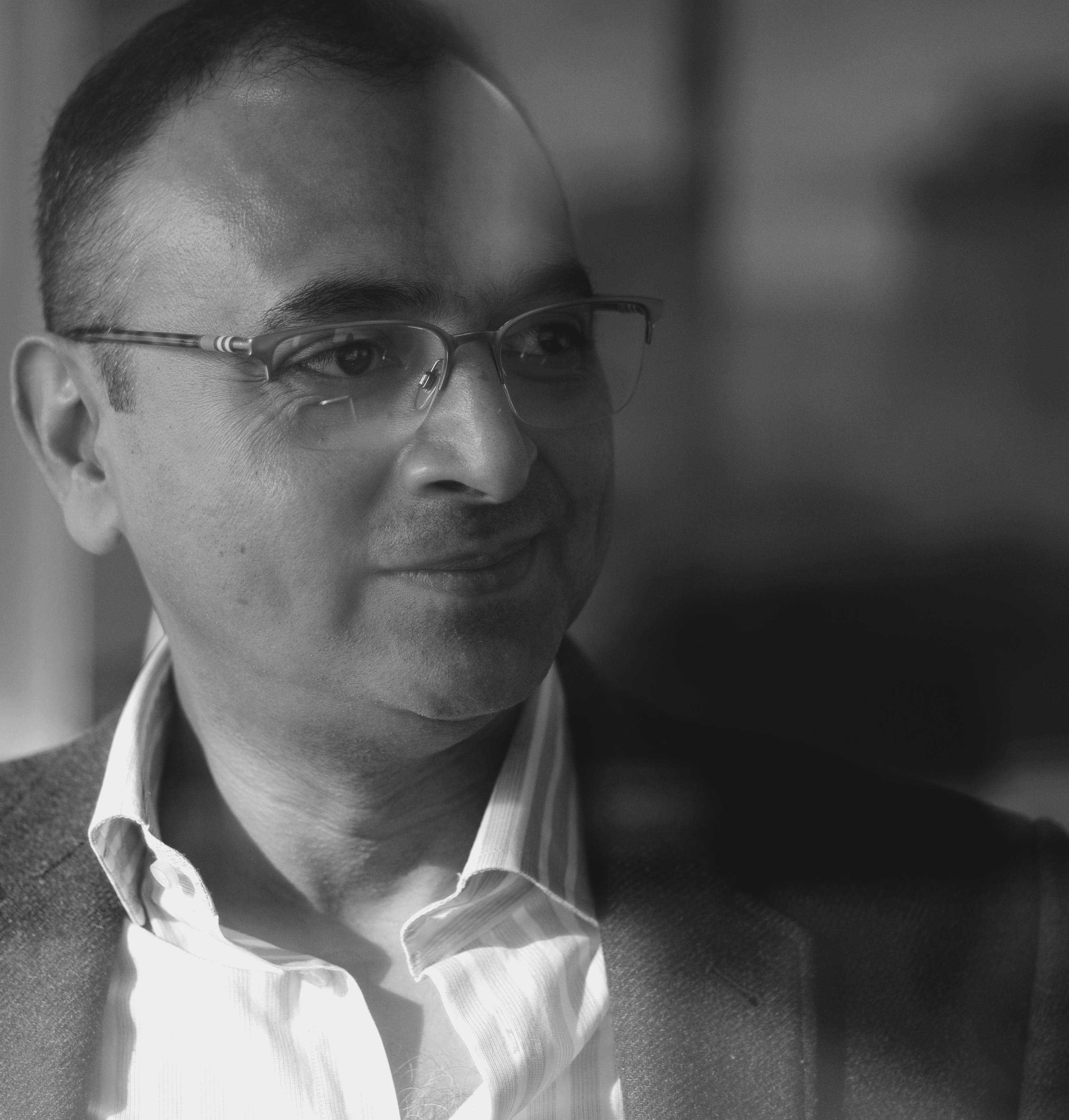
There is a huge gap between what organisations think their processes are, and what they actually are”
BAIN & COMPANY 73
Avinash Misra Founder and CEO, Skan
“There is a huge gap between what organisations think their processes are, and what they actually are,” says Avinash Misra, Founder and CEO of Skan. “Historically we have had two ways of understanding how work gets done: We can talk to people and ask them, and we can look at backend data. Both leave a lot to be desired.”
Human beings are naturally bad at describing exactly what they do to get something done. Misra uses the example of asking someone how to drive a car: You will be given a loose abstraction of how to stop at a red light (‘hit the brake’), but no information at all about the complex interplay between vision, neurons, muscles, peddles and brake pads that actually constitutes the work.
Likewise, back-end data only records the results of work, not the work that led to it being committed to the system. Skan’s mission is to fill the “huge chasm” of process know-how to help organisations tune out as much costly triviality for workers as possible.

“We want the workers of the world to spend a lot more time on the things that add value, and less time on the preparation of how they get to those outcomes,” says Misra.
Skan’s proposition is of obvious utility in Bain’s mission to help organisations shape their human-centred future of work, and the companies have formed a partnership to work together to that end.
Vinay Mummigatti, Skan’s EVP of Strategy and Customer Transformation adds: “Most of the time our customers
CASE STUDY DIGITAL BULLETIN
74
“Workato is a leading provider of a business operations platform that helps enterprises automate their business by bringing business and IT teams together in a democratised yet centrally governed way.


“There are two advantages that Workato brings. Firstly, an ability to have high volume data transformation and connections within an organisation. And secondly, a way for less technical folks – business people – to manage them. A common challenge that organisations face is through mergers and acquisitions, and you find yourself with multiple systems with overlapping capabilities. Workato is particularly suited to address that challenge.”
 Ted Shelton
Ted Shelton
ISSUE 39
BAIN & COMPANY 75


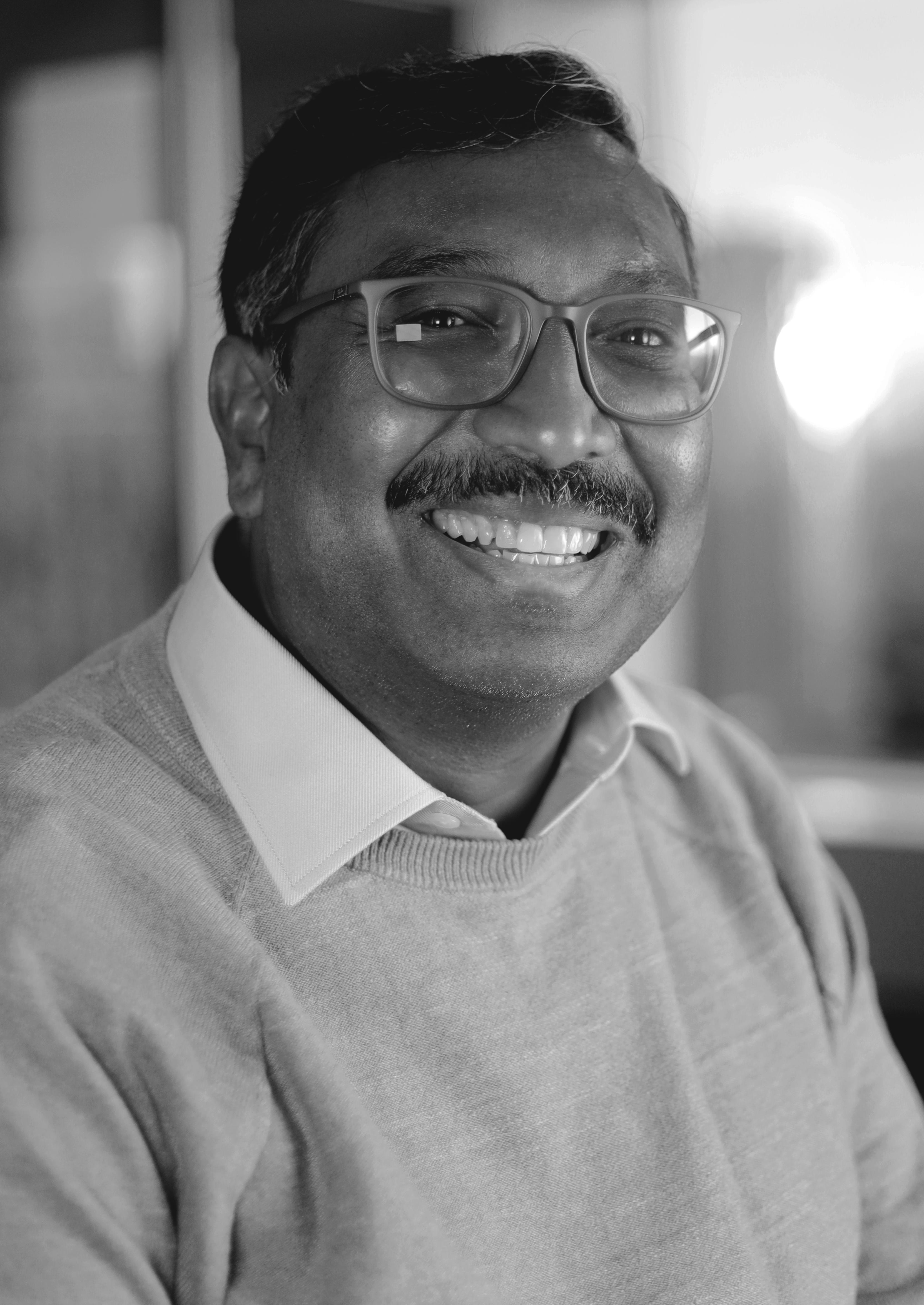
CASE STUDY DIGITAL BULLETIN
The future of work is the bridge to the future of business”
78
Bharath Yadla VP, Strategic Initiatives, Workato
are driving blindfolded, so giving them the data, models and visibility to how humans work leads to various outcomes.
“Bain is clear about where this whole trend is headed in terms of understanding the human aspect of work. We gather the right data points for them to make hypotheses to drive their strategies to transform, train, and enable a particular workforce.”
Where AI and automation are the technologies disrupting how workers work, Skan provides an automated system to pinpoint where they can be applied to ensure they are done so in service of humans.
Workato
And when it comes to automation, organisations can turn to Workato, whose modern business operations platform is used by enterprises to automate their business and IT processes.
Any time-consuming and complex business process can be automated, leading to empowering humans to be more effective, innovative and efficient. For example, where an inbound sales lead automatically generates entries in Salesforce, an Outreach process, a demo booking, a Slack notification, that means a talented sales rep somewhere in the business now has more time to talk to customers about their needs.
“When people look at automation, they do so mostly from an efficiency standpoint. However, Workato approaches
automation from a very unique and holistic perspective. It is about efficiency, effectiveness, and experiences – all together,” says Bharath Yadla, VP of Strategic Initiatives at Workato.
“But when we talk about the future of work, it is not just about employee experience, but rather the ‘Future of Business’. The ‘future of work’ is the bridge to the ‘future of business’, and that revolves around the five towers of automation: customer experience, employee experience, supplier and operations efficiency, front-office systems, and back-office systems. Processes, systems, and people need to work across these towers to drive real business impact. The ultimate goal of creating business impact is building a platform-driven business.”
Workato is making business process redesign through automation more impactful, and Bain is leveraging that capability via a partnership to bring the benefits to its clients. While Bain provides the consulting and strategy for enterprises by identifying and redesigning processes, Workato makes it a reality by automating them. The automation market is converging, and Workato visualises automation as a spectrum. It brings together organisations’ data, processes and experiences in unison.
In fact, Workato uses its own platform to automate its own business operations, including employee experience. Carle
ISSUE 39
BAIN & COMPANY 79
Quinn, Chief People Officer at Workato, points to the company’s own approach in encouraging an aspirational attitude towards automation and the culture of dynamic change and innovation it allows.
“We do hackathons in Workato where we actually try and get people to automate themselves out of their existing job,” she says.
“The point is to help take them into that next level role. People want to add more value, they want to have more impact. They don’t want to stay focused on transactional activities or tasks. So they actually get really excited about thinking differently about the value that they can bring.”
Quinn cites research that found, post-pandemic, 70 percent of people no longer say they fear automation is going to replace jobs, instead sharing Bain’s belief that it can serve to make their jobs better.
“I can tell you that our vision for the future of work within Workato is to inspire our

employees to reach their full potential and thrive in life - in a way that helps to impact and drive value for our customers. To do that, you absolutely have to ask: ‘Are there other ways to do this task more effectively?’ In order to get that worker passionate about the impact they can have, we have to figure out the things they don’t need to do,” she says.
The future of work, according to Bain and the partners it engages on the leading edge of change, will see declines in the number of people spending time in manual and labour-intensive roles, including in manufacturing, office and administration, sales, and more. On the flipside, the number of roles people can perform instead is almost endless. When it comes to problem solving, creativity, and interpersonal connections, humans freed of low-value routine are liberated to innovate and develop new opportunities for themselves, their employers, their colleagues, and their communities.
CASE STUDY DIGITAL BULLETIN
80
Carle Quinn Chief People Officer, Workato

Shelton’s call to focus on redesigning work on human principles strikes to the heart of both the challenge and the opportunity for all organisations. To succeed, they must plan to double-down on education and skills development in the face of a tightening labour market, develop empathetic management styles that prioritise purposeful activities for workers, and strive for workforce diversity to maximise their talent pool and disempower groupthink.
The technologies are already here, and Bain is already working to build a very different working future with its partners.
“I think there are very few times when you have the opportunity to be in the middle of what is not just a massive change for your own life or your own business, but really a massive change for all of humanity,” says Shelton.
“I am very excited to be right in the middle of that.”
ISSUE 39
BAIN & COMPANY 81
THE SELLERS OF THE FUTURE
After 40 years in the game, IT industry stalwart CDW has built the selling tools of the future to make sure it stays ahead.
 AUTHOR: Sam Jermy
AUTHOR: Sam Jermy
82 CASE STUDY DIGITAL BULLETIN

ISSUE 39 CDW 83
CDW Corporation (Nasdaq: CDW) is a leading multi-brand provider of information technology solutions to business, government, education and healthcare customers in the United States, the United Kingdom and Canada. A Fortune 500 company and member of the S&P 500 Index, the company has continually innovated to maintain its position as the primary resource for a vast array of IT products and services for customers across a spectrum of sectors. As the technology world has become increasingly complex, so has delivering optimum service as a leading provider of IT products and services. From humble beginnings in the 1980s, USA-based CDW is now a multi-divisional organisation making transactions in over 160
countries. Its 15,000-strong workforce generated sales of more than $23 billion in revenue in 2022, with the company serving several key sectors, including: small and medium-sized enterprises, education, healthcare, and government.
After building a substantial global capability over the last six years, the company is now looking to take things to the next level. To do this, it must empower its sales workforce to become even more responsive and in-tune with customers’ needs, in turn enabling a higher level of service throughout the end-to-end sales process and beyond.

Jill
Billhorn, Senior Vice President of
Commercial
Sales at CDW,
says: “Our business is to take customer challenges, issues and opportunities and match
DIGITAL BULLETIN
84 CASE STUDY
them up with the best manufacturers and service providers in the world.
“We are one of the largest partners of all these major manufacturers. It gives us increased leverage, both from a knowledge and technical resource standpoint, which helps us wade through all the complexity around technology and how it makes businesses work. CDW serves as
a one-stop shop for technology needs in today’s more complex marketplace.”
Shifting Landscape
As with most companies, the way CDW operated evolved during the COVID-19 pandemic. It did so in concert with its customers, who were also shifting the way they did business. Remote and hybrid working
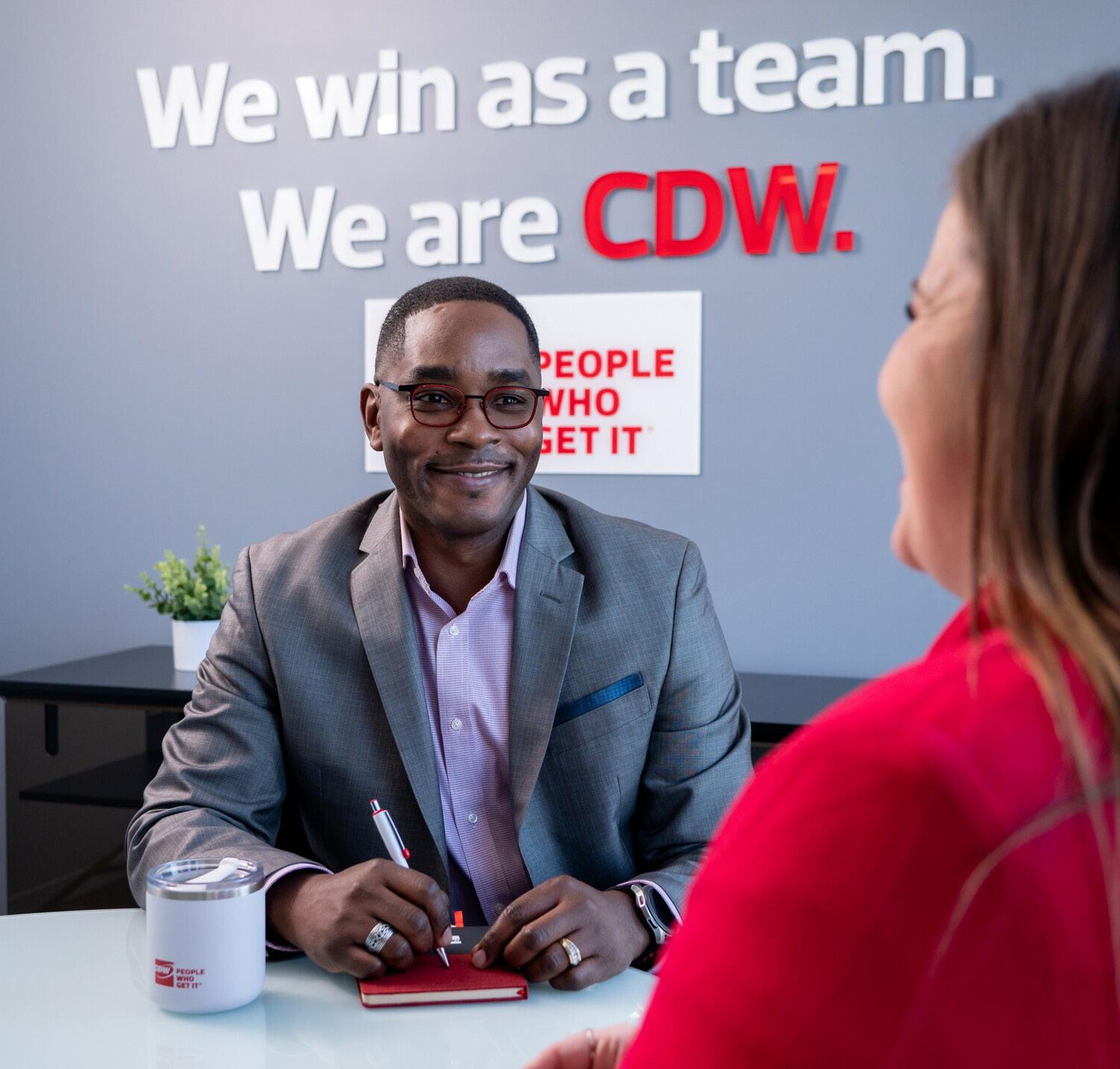
ISSUE 39 CDW 85
Jill Billhorn
environments emerged at pace, accelerating a trend that was already in motion.
“I think it created some vulnerability across the customer landscape. Regardless of what kind of customer you were, nobody had a standard operating procedure, or a manual to say, ‘this is how I should do business during a pandemic’. I think the creativity and innovation around that time really accelerated digital transformation,” says Jill.
“The relationships we’ve fostered were very important because of the
trust involved. But we were all navigating this together. I would say the digital acceleration and that landscape around doing business differently was already happening, but it underwent a major lightspeed acceleration. Technology solved those unique problems. We are now helping customers understand what the future looks like in a more hybrid way.”
There were learning points gleaned from the pandemic for CDW, primarily that its own infrastructure needed to transform to keep pace with growth and the changing nature of its customers’ needs. As the spine of CDW’s success, Jill says its sales teams needed to demonstrate to customers how they were relentless in transforming themselves to provide better service. Sales advisory boards came to prominence - set up to provide continuous feedback in real-time, ensuring the sales organisation understood what changes needed to be made, and then make them quickly.
A significant change more recently has been upgrading the company’s enterprise CRM. Jill says: “It was an extremely important decision. It was also a very large investment for us. We’re at the beginning of a journey to automate and modernise everything in our systems from the tip of the spear all the way through to our cash and invoicing.”
These changes have been geared towards helping the CDW salesforce be less burdened by process, better informed,
Our business is to take customer challenges, issues and opportunities and match them up with the best manufacturers and service providers in the world”
CASE STUDY DIGITAL BULLETIN
86
and empowered with data. It is a cultural journey as well as one of digital transformation, and the evolution has enabled the CDW sales team to be even more attentive and tuned in to customers’ needs.
The average seller has been working at CDW for more than 12 years, and the average customer has been involved with the company for over a decade. A key reason for this, believes Jill, is how the company’s management team has empowered its salesforce. She says:

“Great salespeople are revered at CDW because they build their own sales pipelines. They drive customer relationships. They work hard. We give them a lot of autonomy and flexibility on how they want to build their own books of business. They must get to know customers’ businesses very intimately to understand how it matches up with the right solutions. We are major connectors in this regard.
“The single biggest problem for any sales-driven organisation is how to take
CDW ISSUE 39 87
non-selling time off the plates of sellers. We believe that our recent technology additions help us to achieve this goal.”
Smart Business
CDW has experienced significant growth in recent years, with revenue rising by more than $5 billion since 2020. The company serves its customers with a portfolio of more than 10,000 products, ranging from lap-
top accessories to entire server farms and attendant services. However, with the company’s continued growth, it was also important to continue to evaluate and update its technology to keep pace. A legacy ecosystem - built internally over a number of years - couldn’t scale to accommodate the company’s evolving needs. To meet its own high standards of customer service, further transformation was required.
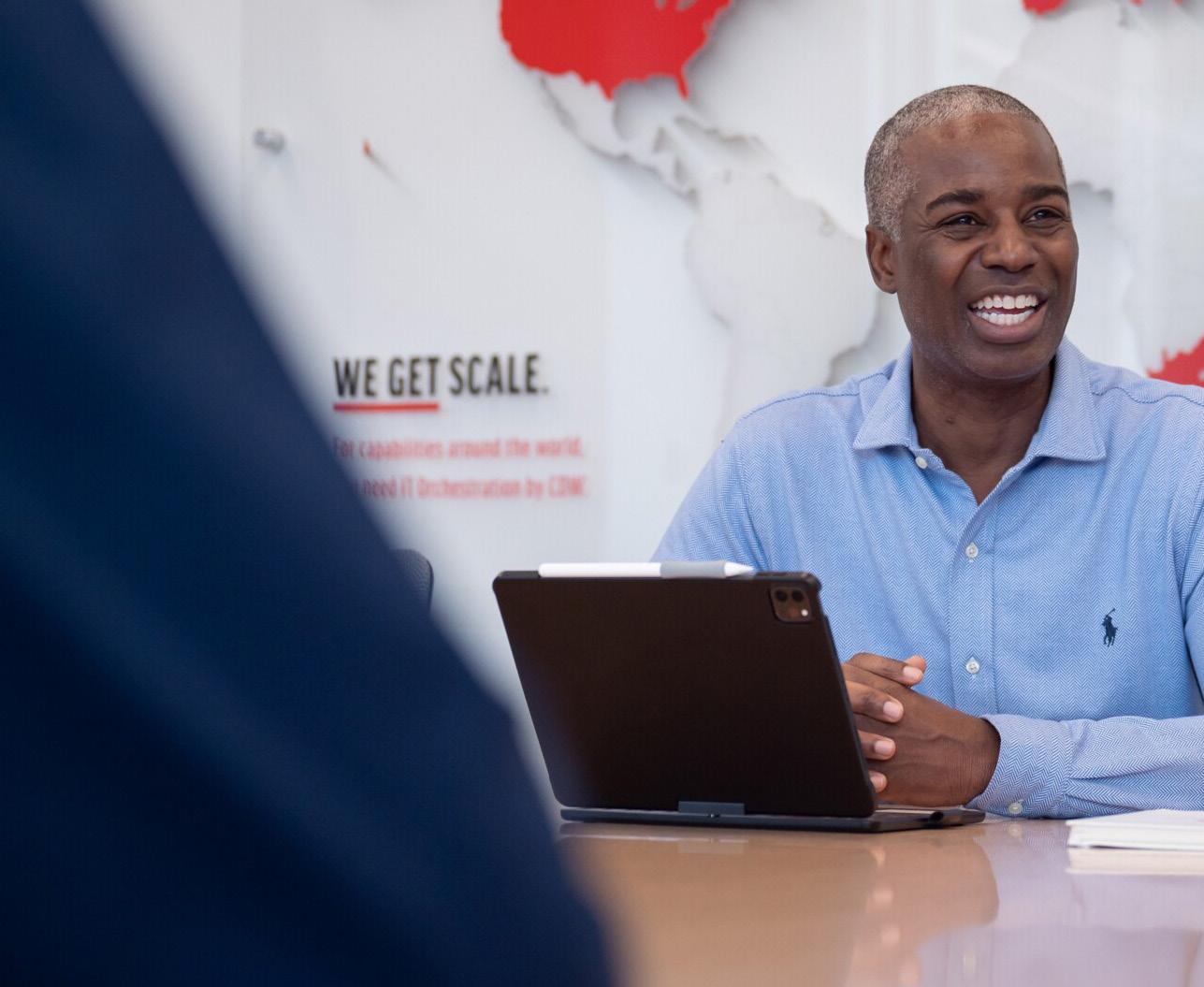
DIGITAL
BULLETIN
CASE STUDY 88
Amarnath (Amar) Lingam, Vice President and Global Head of CDW’s Enterprise Data Science and Analytics organisation, explains: “If you look at our impressive supply chain, the way we operated so far has got us to this level. But if we really want to scale to even higher growth, we can achieve much more productivity through the transformation of the technology that we have. There are many
opportunities to make a difference for our customers through our solutions and product offerings.”
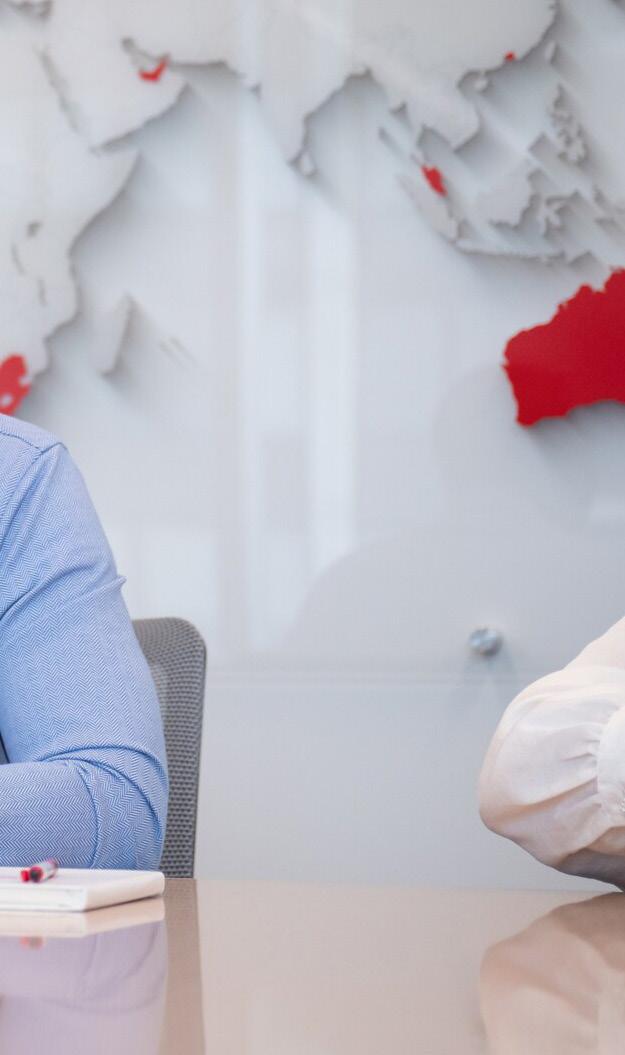
Amar leads CDW’s development of advanced technologies in the analytics and data science space to deliver powerful new insights to the company’s sales team. Installing a comprehensive new CRM system is the latest highlight of a programme that has also seen Amar work closely with Jill to construct an advanced AI-driven product for the entire sales organisation. A game-changing innovation, dubbed Customer Mosaic.
Ingesting and processing data from both internal and external sources, Customer Mosaic is described as a single place for a seller to learn everything about their customer, to find new opportunities and to

CDW ISSUE 39 89
Plan
intelligently. Execute flawlessly. Adapt to disruptions.
Anaplan is a market-leading, cloud-native, enterprise SaaS company, transforming how enterprises across industries see, plan, and drive business performance. Powered by our proprietary Polaris Calculation Engine™ and Hyperblock® technology, our platform lets customers model “what-if” scenarios, contextualize current performance in real time, and forecast future outcomes for faster, more confident decisions.


Learn more
share learnings across the seller community. It has become a key tool within the company’s transformational arsenal.
Amar says: “We didn’t focus on the traditional way of just building reports or dashboards; we have taken a product approach. This means building AI-driven data products with a modern augmented analytics approach for insights to solve multiple pain points at the same time and displaying all those insights in one place in a nicely packaged way, just like an app on your phone.
“The AI portion of Customer Mosaic is what we do in the back end to drive that efficiency. It’s the workhorse in the background, creating sales opportunities based on what we learn from all the different places we pull information.”


Jill adds: “We can understand what customers have done with us, the landscape of their historical purchases. It also pulls in external data that will give us news and information about people in their organisation and news around their businesses so we can counsel our customers appropriately. It also taps into our e-commerce marketplace to understand what they’re thinking of - where they are searching, what they are looking for - and it pulls all that together in a central product for sellers.
“Plus, it gives me a high-level view of all our customers - their information, what our relationship has been, and key pieces
Amar Lingam
of information around their business - to better prepare me for customer visits and to fully understand the marketplaces where we want to invest.”
The vision is for Customer Mosaic to be fully incorporated into CDW’s CRM system and to enable much richer propensity modelling, offering powerful, actionable information and opportunities directly to sellers. Building such a knowledge base thus far has been a very human, manual task; the time saved alone will represent a sea-change for CDW’s processes and the experience of its teams.
It’s time to build upon it, enhance it further, and have one of the leading digital strategies in the industry”
CDW ISSUE 39 91
Customer Mosaic is also able to serve up information about CDW’s customers, newscustomers, news, and trends, giving CDW’s sellers important insights, while helping measure their productivity and act as a coaching tool, guiding them to standout areas of opportunity. Amar believes it is also sparking greater customer engagement due to the density of information providing more talking points.
CDW has also leveraged intelligent process automation via an AI-powered digital assistant trained to perform regular business processes. Jill and Amar say feedback from sales has been tremendous, with sellers actively proposing new capabilities to ensure continued improvement. This is driving a lot of efficiencies and aims at improving the seller and customer experience overall.

CASE STUDY DIGITAL BULLETIN
92
Great salespeople are revered at CDW”
Jill Billhorn
Anaplan
CDW has employed tools from business-planning software pioneer Anaplan to further its data intelligence and efficiency goals, effectively automating the processing of sales quotes, invoices, and orders from customers.

Anaplan’s Predictive Insights product interprets the context of activities and understands what is being requested
of CDW by its customers. It then works behind the scenes to process requests and deliver them to sellers to inform their interactions without them having to do the hard lifting themselves.
“I call it coherent journey connection,” says Amar. “Anaplan will also provide us with intent and signals, gained from a wide variety of communication channels. We can attach these signals to our own
ISSUE 39
CDW 93
customer journey, meaning we now possess a robust set of intent signals our customer is generating.”
Layering propensity modelling on top, based on customer behaviour, affords CDW a crystal-clear picture of opportunities with customers, allowing its teams to cross-sell or upsell based on knowledge of what products a particular customer is already purchasing.
“The entire concept is enabling the seller of the future, and the capabilities that we could give them, to help them create an enriching customer experience and to achieve greater success,” adds Amar.
CDW has already deployed Customer Mosaic and its Anaplan integration to thousands of sellers across its organisation and continues to roll these tools out systematically across market segments. The positive impact they have made is remarkable.

Amar says: “We’ve had overwhelmingly positive feedback. A lot of anecdotes and success stories from sellers, and the sellers who are adopting these products are really pleased with our digital transformation.”
The sellers of the future
Going forward, the job of CDW leaders such as Jill and Amar is to encourage engagement and adoption throughout the business. Regional leadership and business champions will evangelise the new tools to the organisation at large and illustrate how to best use the technology.
Several roadshows are being held, and the news is being published internally across CDW publications to improve visibility for sellers who may not yet be fully aware of new capabilities available to them.
“The advisory boards were very impactful for our sellers to stay engaged and to feel like they were empowered to deliver feedback, make changes, and offer recommendations for the organisation. ‘Sales’ can sometimes have a negative connotation, but we really look at
DIGITAL BULLETIN
94 CASE STUDY
it as CDW being a connector and building relationships on both the partner and customer side,” says Jill.
Both Jill and Amar agree that the sky is the limit when it comes to how the technologies they are deploying will help create the sellers of the future at CDW. For now, the focus is on growing adoption and threading these products together throughout the company, but Amar is driving towards a truly unified seller experience.
“The role of the CDAO is to treat data as a strategic and enterprise asset, drive
innovation, and create business value and efficiencies, and to propel growth. That is the core foundation of our strategy. That’s the future - evolving these products further. We have built a robust enterprise level Data Science and Analytics strategy. We have a strong team, we have strong partnerships, and we have achieved success with these various data products. Now I think it’s time to build upon it, enhance it further, and have one of the leading digital strategies in the industry. That’s our goal.”

ISSUE 39
The entire concept is enabling the seller of the future, and the capabilities that we could give them”
CDW 95
Amar Lingam
Reaching for digital readiness
Intel President & General Manager EMEA, Frans Scheper, considers the future of work and the actions we need to take to prepare.

DIGITAL BULLETIN
96
FUTURE

ISSUE 39 INTEL 97
Each year brings brand new, world-changing technology with it. A few years ago, AI was the big new thing. Then last year it was blockchain, and now we have the metaverse. Just trying to keep track of these technologies and the sheer speed at which new innovations are emerging can be exhausting, let alone future-proofing your organisation with the right talent. Indeed, what’s disruptive today can become shelved tomorrow. Because of all of this, it’s never been harder to know which skills are a priority to cultivate in current and future workforces.
In fact, technology is reshaping the job market so quickly that it is estimated up to 65 percent of children starting school today will enter the workforce and into jobs that do not currently exist. I suspect that many of today’s children will have careers that sound like the work of science fiction. For us in this generation, that means we must prepare our children for a future we can’t even imagine just yet.
Indeed, up to 97 million new jobs will be created as soon as 2025 which will rely on the interaction between humans, algorithms, and machines. To facilitate this steadily approaching demand for technical skills, we need to move quickly. And above everything, the tech industry must step up to address the widening digital skills gap.
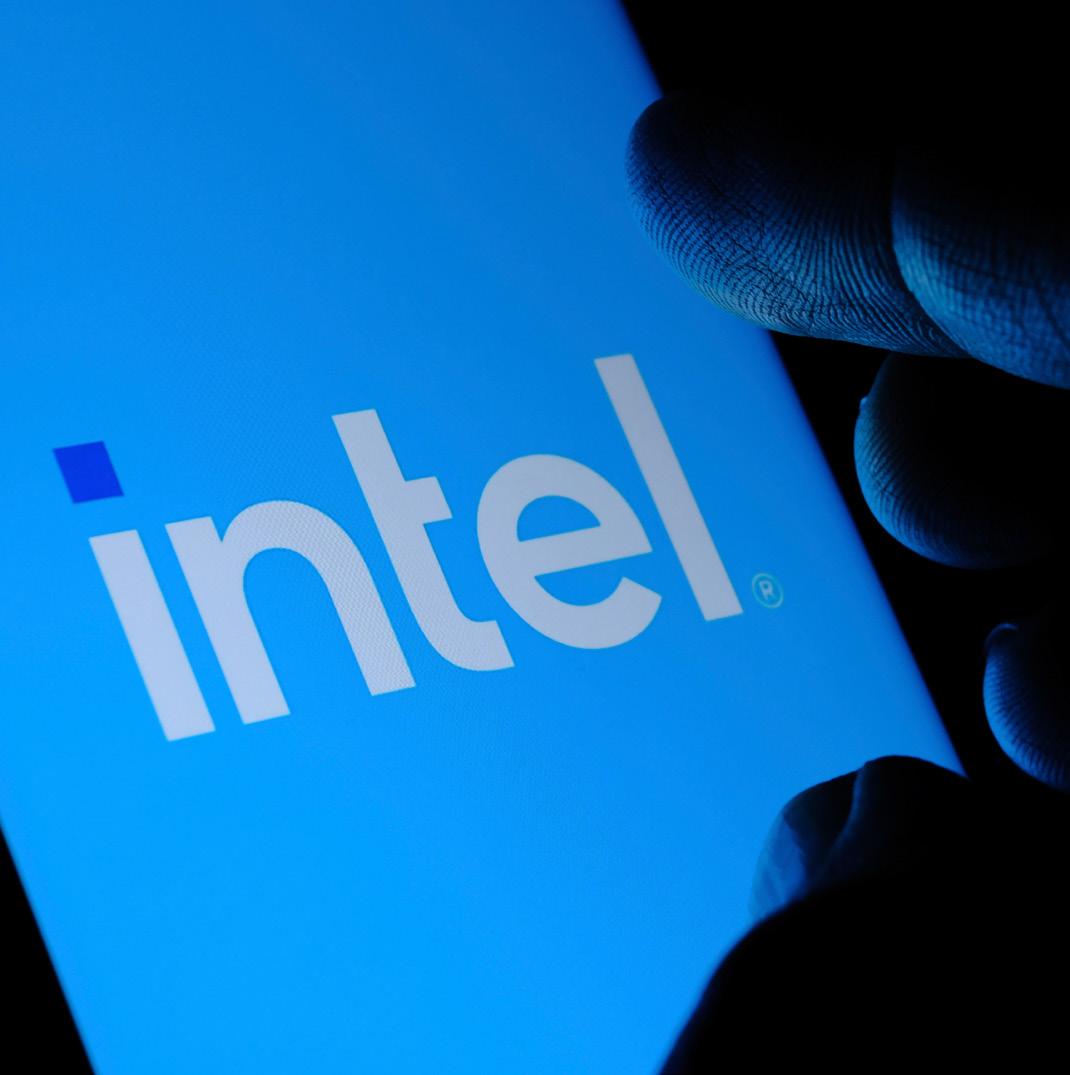
So how are we doing in preparing for that not-so-distant future? Although we

DIGITAL BULLETIN FUTURE 98
have some way to go, there are two critical components that will help us reach digital readiness: education and inclusivity.
The importance of education
Simply put, education will be critical.
Speaking as the first person in my family to receive higher education, I know very well how it can change lives. But there will be more to do than just train more people to become data analysts, engineers, or software developers. In addition to creating totally new roles, we will also need to prepare both

today’s and tomorrow’s workforce for the ways digitisation and intelligent technology will reshape existing roles.
People in conventionally non-technical professions, like care workers, teachers, or nurses, will see innovative technology being woven into their daily work. This could mean using AI to automate administrative processes, using tools like virtual reality to enhance learning experiences, or even machine learning to help in making diagnoses. As a result of all this, organisations will also need to anticipate how technology
Up to 65 percent of children starting school today will enter the workforce and into jobs that do not currently exist”
ISSUE 39 INTEL 99
will redefine these careers and implement adapted training.
Admittedly, that may be a few years away. But elsewhere, companies across all sectors are already feeling the sting of talent shortages as the growing demand for technical skills is outpacing the limited supply of workers with the required expertise. In fact, the ongoing shortage of workers with advanced technical skills is already impacting Europe’s tech sector, with only about a third of candidates having the right skill set for a career in artificial intelligence. This is not just an issue for tech companies either – it is in all our interests to address this shortage. Findings from research recently published by Accenture suggest that plugging the technical skills gap could add as much as $11.5 trillion in GDP to fourteen G20 countries by the end of the decade.
Therefore, it is clear education is the starting point. It is probably our best shot for bridging this gap and preventing it from widening further.
Digital readiness starts with inclusion It takes time for people to get through school, complete degrees, and finish training. Time that we don’t have. But there are things that can be done today. One option is encouraging the growth and reach of digital readiness initiatives that we are seeing pop up around the world. Intel’s Digital Readiness Programs are one example of this, and these focus on equipping nontechnical audiences, future developers, and next-generation technologists with the skills, tools, and opportunities to use emerging technology effectively. In 2021, our work spanned over 20 countries, where we partnered

FUTURE DIGITAL BULLETIN 100
with 50 education ministries and other partners, impacting over 13,000 institutions and 1 million people globally.
Such initiatives can certainly help to tide us over, and they also play a part in making this sector seem less daunting.
However, upskilling and learning programs will ultimately achieve little unless they are inclusive. In fact, digital readiness is underpinned by advancing the accessibility of technological skills for all – regardless of gender, age, race, and socioeconomic background. And in turn, lifelong learning systems must be accessible to all workers, and we must recognise that some are more vulnerable to disruption from technological change, such as automation, than others.
There’s more progress to be made on this front, but nonetheless, there’s some
strides already being made by tech companies across the board.
Preparing for tomorrow, today
When we live in a world that moves as quickly as ours, each year seems to bring vital new skills to learn. And it is up to us as parents, teachers, as well as managers and business leaders, to ensure that we keep up with the demands of the constantly evolving workforce of tomorrow.
Therefore the idea of lifelong learning really resonates with me, and why it is really encouraging to see that digital readiness programs are steadily growing – both in volume and accessibility – and that everyone from school pupils to seasoned professionals can benefit. It shows that digital readiness is steadily getting within reach.
After all, this isn’t just about organisations staying competitive in their respective industries. Careful planning and targeted investments in skills development will not only pay dividends for companies but is vital for advancements in our society and for the economy. All of us — particularly those in the tech industry — have an obligation to make sure we create a positive impact through technology and that no one is left behind. An inclusive, ongoing, education is one of the surest ways to speed us along the road to digital readiness.
ISSUE 39 INTEL 101
Plugging the technical skills gap could add as much as $11.5 trillion in GDP to fourteen G20 countries by the end of the decade”
How to thrive in a hybrid world

DIGITAL BULLETIN
102
Magnus Falk, CIO Advisor at Zoom, discusses how the new hybrid-working landscape can be optimised.
FUTURE
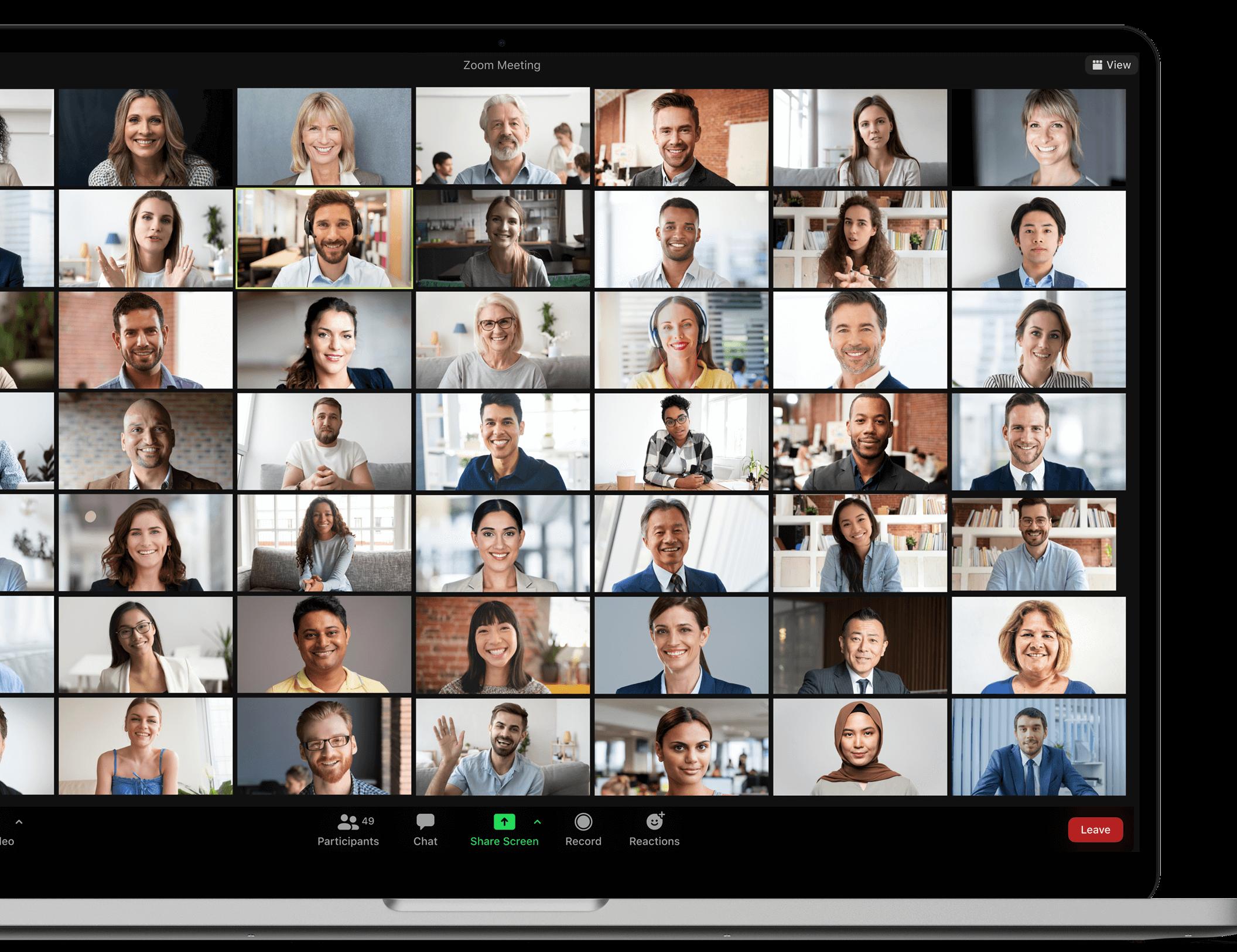
ISSUE 39 ZOOM 103
The move to hybrid working has sparked a second wave of digital transformation around the world. Organisations are looking at their processes and dividing them into those that require in-person attendance and those that don’t, and using this to transform and energise business operations. This offers both a challenge and an opportunity to use digital-centric elements to ensure that both hybrid and in-person workers are happy and productive, working alongside one another as seamlessly as possible. The same technology offers business-event planners a way to bring in-person and remote attendees together in vivid and memorable ways.
Putting employees’ experience first For the past few years, video communication tools have played a crucial role in connecting people remotely. This has now become the norm as the world has switched to hybrid. The evolution of features and functions is continuously making the lives of employees easier, and we are seeing more and more examples of how technologies are helping to create a more flexible, effective, and productive workplace.
In the early stages of hybrid working, challenges are likely to be raised due to a lack of experience. Businesses need to actively leverage and invest in tools that help to tackle this. For example,

DIGITAL BULLETIN FUTURE 104
in hybrid meetings, remote workers can often feel less engaged compared to in-person employees who can see each other face-to-face. This is where software-based room systems can come in, allowing remote attendees to have a broader experience of the meeting room and connect more closely with in-person attendees, as well as creating an environment where communication is clearer.

Tools such as gallery view also help to enhance the hybrid meeting experience by presenting employees’ appearances in a similar format, whether they are in the office or at home, helping people feel more connected. Additional functions like shared chats for workers to distribute input and documents simultaneously during a meeting help to increase productivity.
Transitioning into asynchronous work
With the various technologies and tools available, businesses have shifted into
new ways of working where time might be even more important than place. Asynchronous work allows employees to set their own hours and work ‘together’ via digital tools, which is becoming a defining trend of the hybrid workplace.
To enable asynchronous working, business leaders are adopting digitalcentric communication tools that can level the playing field between remote and in-person teams. This offers every worker the same capabilities, allowing teams to collaborate across time zones and continents with as little friction as possible. Many have experienced the hassle of cross-checking personal and work calendars while implementing flexible working. Having an all-in-one calendar in place which allows syndication of existing emails and provides full visibility of daily plans not only eases lives for employees, but also offers a clear calendar view for colleagues to schedule
ISSUE 39 ZOOM 105
meetings. For employees working at different hours, it’s crucial to have tools like shared whiteboards where they can collaborate on ideas at their chosen time.
Hosting a digital-driven hybrid event Digital-centric elements can also be highly effective for company events, with all-hands meetings and other largescale events increasingly crucial to create a feeling of ‘belonging’ in hybrid workspaces. Again, the most important thing is that the digital elements unite both in-person and remote attendees, offering experiences tuned for both.
Event managers can use tools such as chat rooms and polls to energise hybrid
events, and use advanced analytics to understand what succeeds and what doesn’t, fine-tuning the technologies for the next event. Video conferencing software offers business leaders and event planners invaluable ways to learn, with clear reports and metrics on everything from ROI to attendee engagement delivered instantly.
For attendees, the convenience and ease of contemporary tools remove multiple barriers, such as long journeys and commutes to meetings and conferences. Some relatively simple digital tactics can also help virtual audiences feel more valued and heard, such as taking questions from them first through

FUTURE DIGITAL BULLETIN 106
the Q&A chat function. This also gives meeting or event hosts additional time to think about their responses.

A sense of inclusiveness in hybrid events
When staging hybrid events, it pays to take an overview of both audiences - the in-person attendees and virtual attendees - in the same way a TV producer uses the studio audience as part of the entertainment for those watching at home. Digital-centric tools can ensure that the virtual audience isn’t simply ‘watching’ and that everyone feels involved.
This can also widen the scope of events, and make them more inclusive. For example, inclusive fashion brand Good American has switched its casting call to a hybrid model this year, aiming to overcome the geographic barriers for models and provide a new experience with modern accessibility.
Whether business leaders are designing events or new ways to work, digital-centric tools from whiteboards to chatrooms to shared calendars are crucial to engaging today’s hybrid workforce. Companies that use these tools to truly embrace hybrid working and all its possibilities will be the ones who emerge triumphant from the second wave of digital transformation in our new hybrid world.
ISSUE 39 ZOOM 107
The most important thing is that the digital elements unite both in-person and remote attendees”
A CIO Guidebook to
Saket Srivastava, Chief Information Officer at Asana, gives his list of priorities, pressure points and a positive outlook for the year ahead.
DIGITAL BULLETIN FUTURE 108
2023
ISSUE 38 ASANA 109
As we enter 2023, discussion naturally shifts to where enterprise executives should focus their efforts for the year ahead. CIOs in the tech industry have a large number of touchpoints across the business –including both employees and customers – which gives them the oversight to help reduce friction and increase productivity. For me, there has never been a better time to be a CIO. No longer is the tech function conceived of as a back-office
team. Instead, we are leading the charge in helping the workplace adapt to new realities and pressures. Over the year ahead, enterprises will once again turn to CIOs to usher in a technological transformation that drives productivity, agility, and growth for the future.
Last year has already given an indication of the economic challenges we may face throughout 2023, and leaders must focus on maintaining productivity, performance, and positivity. With this
DIGITAL BULLETIN FUTURE 110
in mind, I explore how the role of CIO will continue to evolve and why it could be just the answer we’re looking for to guide us through uncertain waters.
Enhancing digital dexterity
Today’s enterprise organisations rely on distributed teams, and it is important to ensure that employees can collaborate effectively across time zones, geographies, and departments. A key priority for CIOs in 2023 should therefore be to
For me, there has never been a better time to be a CIO”
consider how technology can be used to improve internal efficiencies and digital dexterity.
One of the biggest challenges to workplace efficiency is that app sprawl is harming our ability to focus. Enterprises are now deploying 187 new tools for their team to use every year – despite around 30 percent of these having a duplicative function. Meanwhile, workers are switching between an average of nine apps every day, leading to distractions, missed messages, and notification overload. We can’t afford this level of distraction when work today is more cross-functional and distributed than ever. Collaboration and connection are not only more important, but more complex, and this is why in 2023, IT leaders must evolve their tech suites to transform how work is managed and drive business success. A great place to start is considering a work
ISSUE 38 ASANA 111




FUTURE DIGITAL BULLETIN 112
It is important to ensure that employees can collaborate effectively across time zones, geographies, and departments”
management solution to centralise tasks, projects, and goals in one place, while providing transparency around who is doing what by when.
Efficient and effective investments
The slowdown in the economy has also brought into sharper focus the need for CIOs to be responsible stewards of tech spend. In business, it is often thought that “more is better” in terms of tech, but CIOs should now take the reins of technology strategy and select the tools that can have the most impact. With just 11 percent of organisations believing their current business models will be economically viable through 2023, CIOs must look to maximise the value of the technology they already have.
Technology should decrease the coordination cost of work. This means building a tech stack that updates individuals across multiple platforms without the need for context switching, drives productivity, and minimises unnecessary cross-functional processes and the errors they produce. Remember, the end goal is an empowered team that is focused, collaborative, and free from digital overload.
Automation is a sound investment to make, as it can free up employees to focus on high-impact work, optimise resources, and drive productivity. Work management platforms save employees time, reduce the need for status updates,
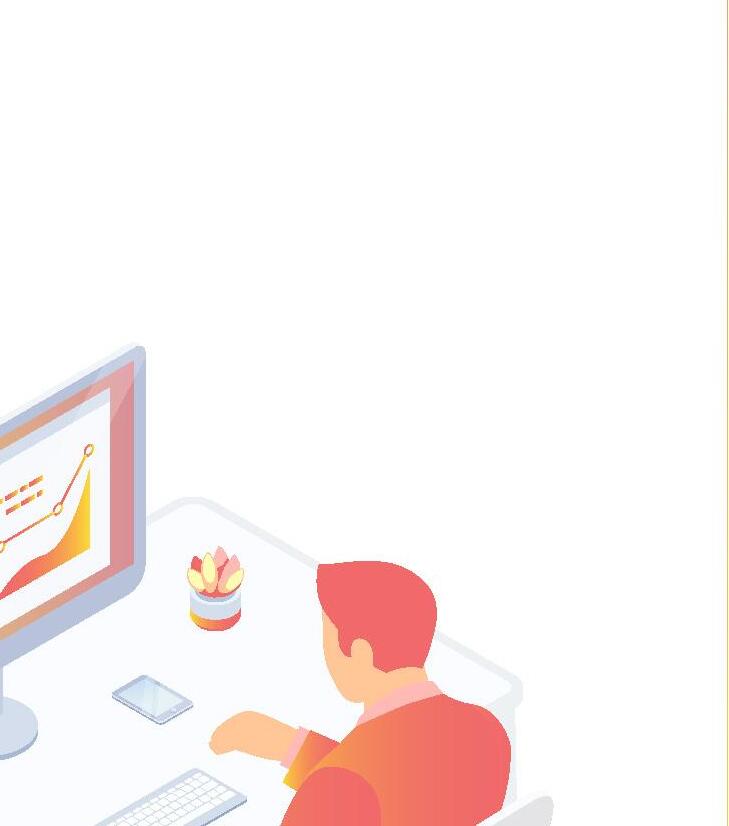

ISSUE 38 ASANA 113
and alleviate reliance on clunky spreadsheets and never-ending email chains. Having this single source of truth can also support annual planning by giving a holistic view of what is and isn’t working when it comes to project delivery –making it far easier to plan for 2023.
Trickle down from employees to customers
For me, the secret to success for any CIO is simple – your teams. One of the most critical priorities that CIOs should make in the year ahead is ensuring that employees have the tools to be engaged,
efficient, and productive. Only then will your enterprise be best equipped to meet critical business goals.
An important method here is to help individuals connect their tasks to wider company goals, which creates a sense of teamship and enables individuals to see how their day-to-day work is contributing to the bigger picture. With visibility into the impact they are having, people become more engaged with what they’re doing.
The ability of teams to focus on work that drives meaningful results ultimately trickles down to the quality of customer
Saket Srivastava is the Chief Information Officer at work management platform
Asana. Saket oversees Asana’s IT organization, including optimizing technology systems and processes, connecting technology strategy to overarching business strategy, and ensuring that technology infrastructure supports organizational goals. Previously, Saket held executive positions at Square, Guidewire Software, and other leading technology companies. Saket holds a Master of Computer Applications (MCA) from the Institute of Management Technology, Ghaziabad, and an MBA from UC Berkeley’s Haas School of Business.

FUTURE DIGITAL BULLETIN 114
experiences and outcomes. In 2023, having a real-time pulse on customer needs will be crucial for CIOs, as many organisations evaluate new uncertainties when it comes to long-term planning.
Final thoughts
While businesses are faced with challenging economic conditions and resource constraints, CIOs have an exciting opportunity to drive growth over
the coming 12 months. To achieve this, they should identify and prioritise the investments that will have the biggest impact on their organisation. This will prove pivotal in positioning enterprises not just for 2023, but also for longerterm growth. It’s no easy feat, but by focusing on the priorities above, CIOs can ensure their teams remain effective, efficient, and able to meet whatever challenges the future may hold.
ISSUE 38 ASANA 115
The future workplace: an inclusive metaverse











Nathalie Vancluysen, Head of Extended Reality at DXC, discusses the untapped potential of the metaverse and how it can improve inclusivity.

DIGITAL BULLETIN
116
FUTURE












































































































































































































ISSUE 38 DXC TECHOLOGY 117
Massive societal shifts over the past couple of years are prompting a mass re-evaluation of the workplace. While much attention has been paid to “agile” working, the way we conduct work meetings has also undergone a major transformation, with hybrid and virtual meetings becoming the norm for many.

From our experience managing the workplaces of over six million users, DXC Technology knows that many workers feel torn between the freedom and flexibility of remote work and the desire to reconnect with colleagues and clients. A recent Microsoft Work Trend Index study highlights this dichotomy. Over 70% of workers want flexible remote work options to continue, while over 65% crave more in-person time with their teams. The evolution of the metaverse could enable organizations to give their employees the best of both worlds.
Tech companies are now looking to transform virtual workspaces into a “metaverse” of social and business interactions in a stimulating 3-D environment. At DXC Technology, we not only sell metaverse solutions and services to customers, but we are eating our own dog food and are actively using virtual world technologies in the light of our decision to move to a “virtual first” model for our more than 130,000 employees in 70 countries. In fact, we’ve built our
The metaverse by nature is interactive, encouraging a more collaborative working environment”
Nathalie Vancluysen
DIGITAL BULLETIN FUTURE 118
own virtual campus called the DXC Virtual World, which is an ‘always-on’ private metaverse environment for our colleagues, customers and partners to collaborate and innovate together.
Our experience shows that employees of virtual first organizations, especially those with access to opportunities to collaborate in the metaverse, are more productive, more engaged and can take part in their communities in new ways. In fact, according to a recent study of 200 DXC employees, 61% said they looked forward to meetings in our virtual world.
As this figure attests, the metaverse can help to reinvigorate the workforce and add a new dimension to meetings. Employees can have the opportunity to explore diverse virtual worlds – and all
from the comfort of their preferred workplace. The metaverse by nature is interactive, encouraging a more collaborative working environment, which enables employees to gather to discuss ideas in a more creative and stimulating way. While making the transition to meetings in the metaverse requires some groundwork and planning, it can help set employers apart in terms of employee experience, which is integral in the age of “the great resignation” and “war for talent”.
A key concern for today’s hybrid workforce is the death of so-called “water cooler moments”. Unlike a traditional virtual meeting, the metaverse actively encourages employees to explore, network and interact with others. There are constant opportunities for “random colli-
ISSUE 38 DXC TECHOLOGY 119
sions” – such as bumping into colleagues - which can help to foster spontaneity and creativity, sometimes sacrificed during traditional modes of communication.
Another way the metaverse is transforming the workplace is in creating a truly flexible and customizable environment. Once deployed, organizations have the freedom to choose an environment best suited to their needs. The metaverse is also incredibly scalable, meaning organizations can easily increase capacity as required.
The potential of the metaverse to improve collaborative equity is significant. In virtual environments a person’s location, gender, physical attributes, or personal circumstances are less important than their ideas or the quality
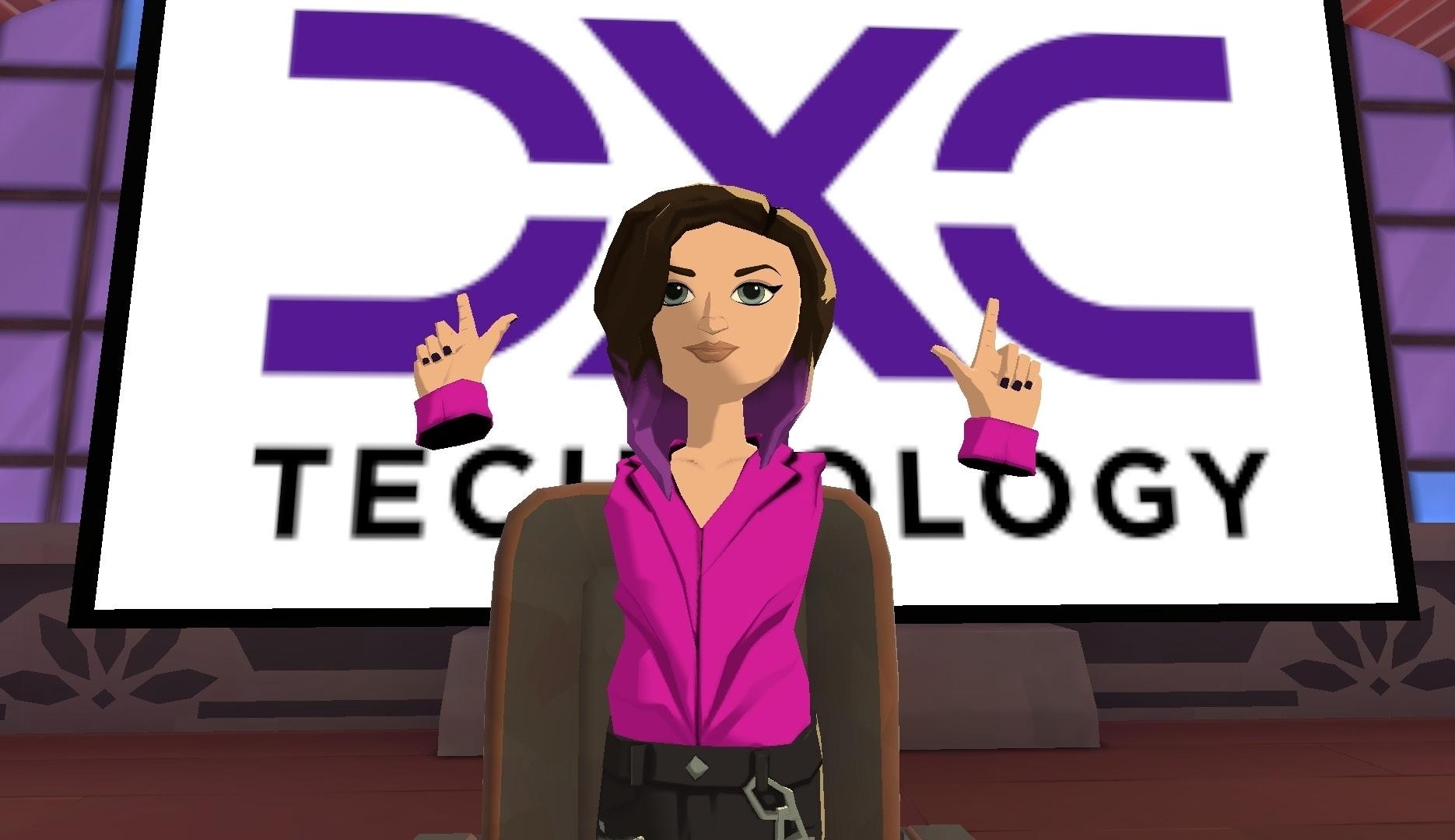
of their work. As a result, organizations can benefit from diverse new talent pools from previously underrepresented groups. From mothers nursing their infants, to people with physical or psychological challenges, no one needs to be excluded from the metaverse.
At DXC, we’ve already noticed a real uptake in utilisation from our own workforce, indicating that employees are ready to embrace the next frontier of workplace technology. 57% have already attended an event in the metaverse, and half are using it at least once a month. Moreover, a third said that they were more engaged in their job because of the opportunity to meet virtually.
But for virtual environments to be genuinely inclusive, tech companies
A
FUTURE DIGITAL BULLETIN 120
Nathalie Vancluysen’s avatar
must provide everyone with the tools and technologies they need to take part and feel represented. This provision isn’t just about giving people laptops and creating diverselooking avatars, but also addressing










people’s physical challenges, such as providing control interfaces for those unable to use a conventional keyboard. These are issues that need to be addressed now as we lay the metaverse’s foundations.










































































































































































































































































































































































































































































































































































































































































































































































ISSUE 38 DXC TECHOLOGY 121

CONTACT US COMMERCIAL ENQUIRIES BUSINESS@DIGITALBULLET.IN EDITORIAL ENQUIRIES EDITORIAL@DIGITALBULLET.IN BUSINESS@DIGITALBULLETIN.COM EDITORIAL@DIGITALBULLETIN.COM

 ROMILY BROAD Chief Executive Officer
ROMILY BROAD Chief Executive Officer








 AUTHOR: Ben East
AUTHOR: Ben East






























 AUTHOR: Sam Jermy
AUTHOR: Sam Jermy
































































 Zeki Turedi, CTO EMEA, CrowdStrike
Zeki Turedi, CTO EMEA, CrowdStrike










































































































































































































 Gabriel Aguiar Noury, Robotics Product Manager, Canonical
Gabriel Aguiar Noury, Robotics Product Manager, Canonical



 AUTHOR: Ben East
AUTHOR: Ben East









 Ted Shelton
Ted Shelton














 AUTHOR: Sam Jermy
AUTHOR: Sam Jermy













































































































































































































































































































































































































